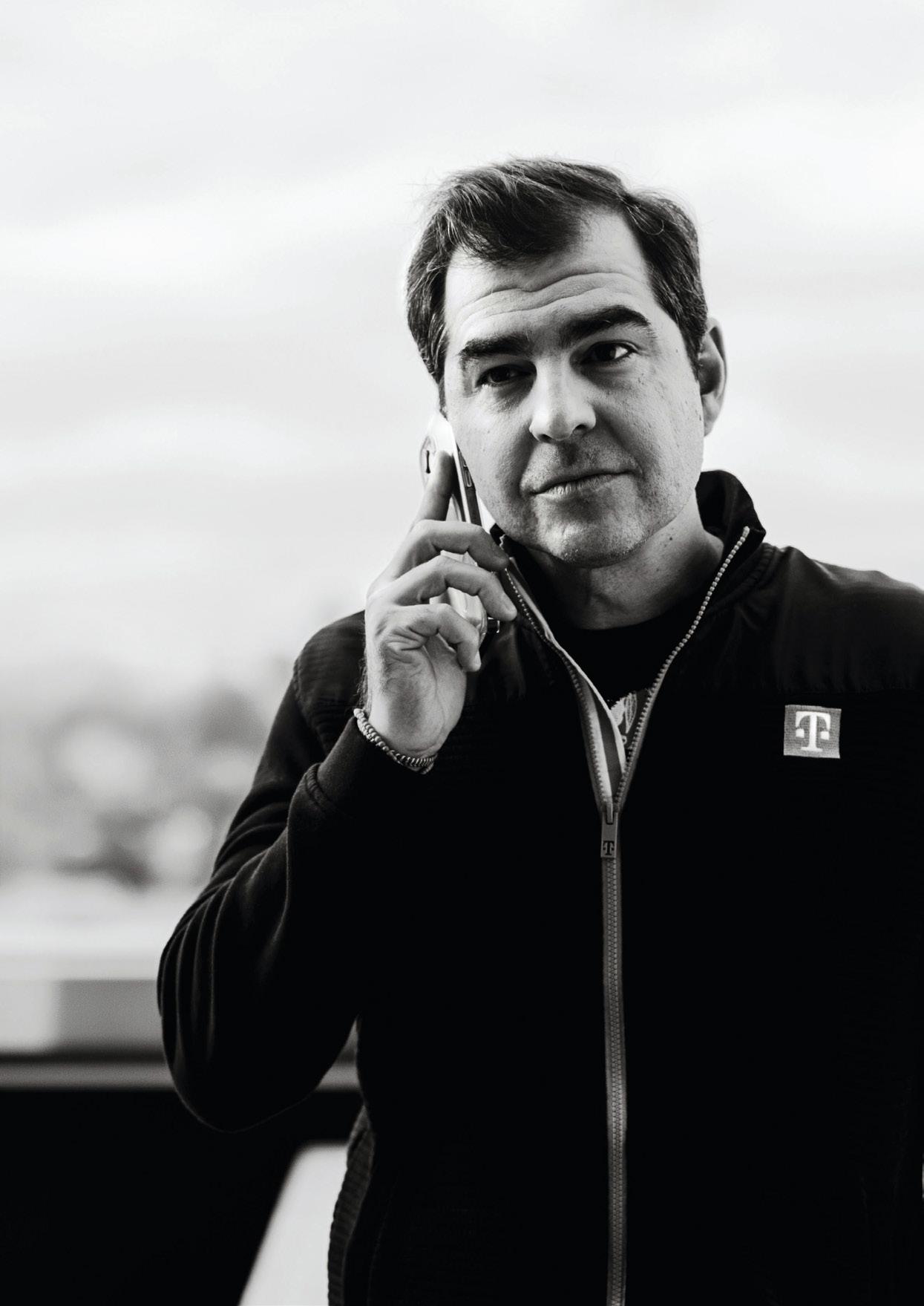
ENABLING 5G SUCCESS THROUGH SUPPLY CHAIN TRANSFORMATION T-MOBILE: T-Mobile’s SVP Max Caballero-Vieyra shares exclusive insight about the journey to become the top 5G provider in the US LOS ALAMOS NATIONAL LABORATORY LOGISTICS NETWORKS PROCUREMENT TRANSFORMATION AT HISTORIC NUCLEAR FACILITY SAP ON HOW CHAOS IS RESHAPING LOGISTICS Supply Chain Technologies ACCENTURE UNILEVER CAPGEMINI FEATURING: Mar 2023 | supplychaindigital.com







A BizClik Event Join the Virtual Event Disrupting Procurement & Supply Chain 28TH JUNE 2023 VIRTUAL CONFERENCE
Join the must-see virtual event disrupting procurement and supply chain on the 28th of June 2023.
This year, we are bringing you a solely virtual event, Procurement & SupplyChain LIVE Virtual will highlight the innovators changing the industry. Brought to you by BizClik, Procurement & SupplyChain LIVE Virtual will be held on 28th June 2023, streaming remotely to virtual audiences around the world.
The unmissable event will feature expert keynote speakers, interactive fireside and panel discussions, and more. Do not miss this 1-day deep dive into the disruption and the future of procurement, supply chain and logistics.
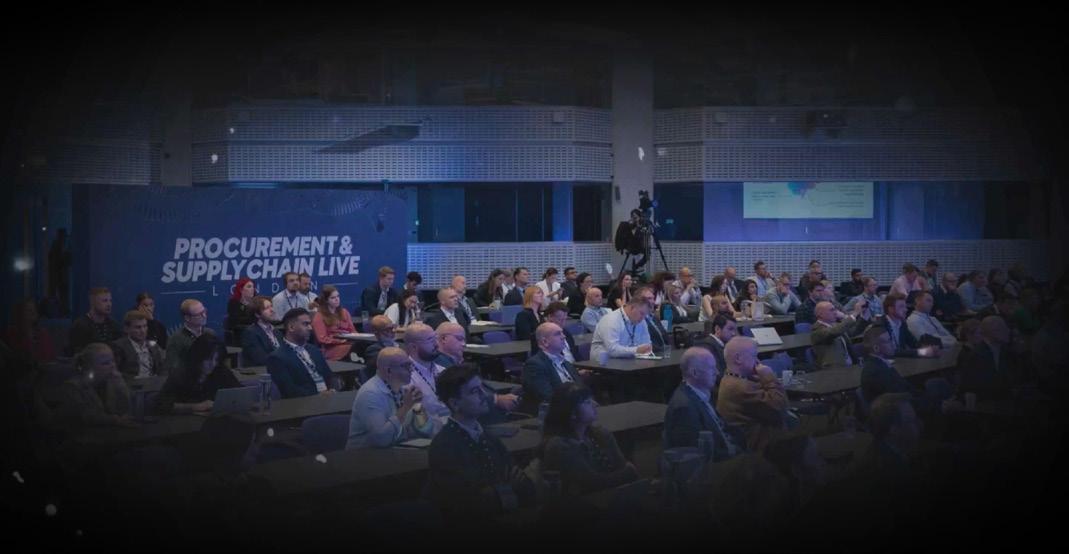
Sponsorship Opportunities
Do you want to position your brand in front of thousands of innovators, decision-makers and influencers?


Sponsor Procurement & SupplyChain LIVE to unlock the future of your business, access thousands of potential partners and influence businesses at the highest level.

Both global giants and innovative start-ups alike can discover the ideal platform with easy access to an engaged and active audience.
Contact a member of our team today to discuss sponsorship opportunities.
See you on 28th June 2023.
It’s time for DISRUPTION. GET YOUR PASS SPONSORSHIP
Innovators are paving the way for a more resilient, sustainable, and efficient future. The rules have changed. It’s time for disruption.
▶ Watch our showreel from PROCUREMENT & SUPPLY CHAIN LIVE London 2022

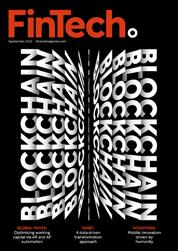

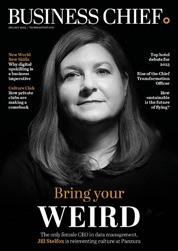


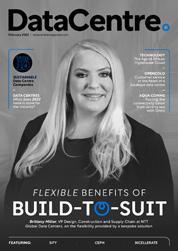
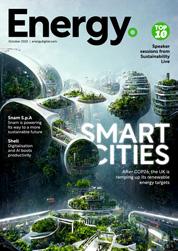
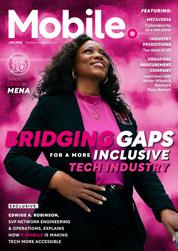
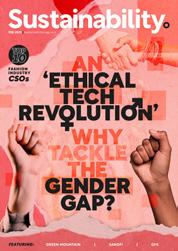

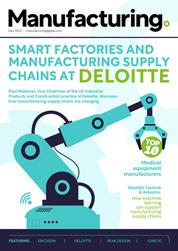
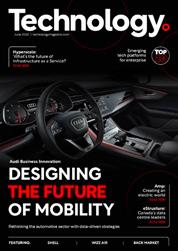
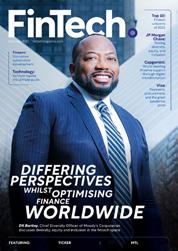

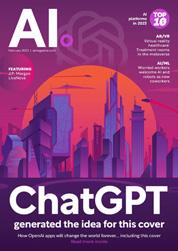
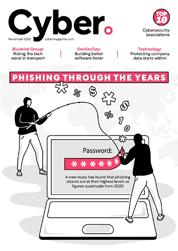
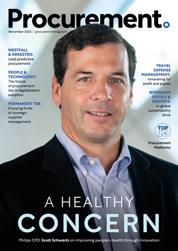
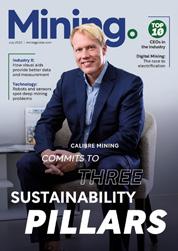
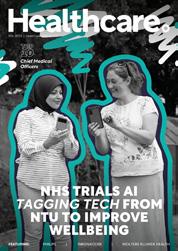

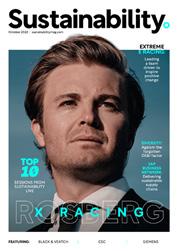

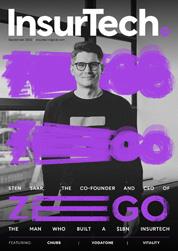

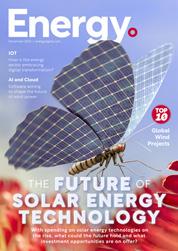



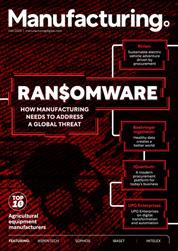
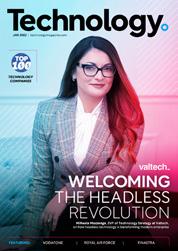

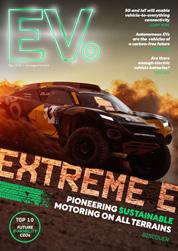
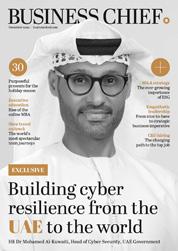

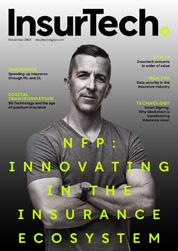




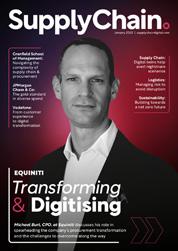
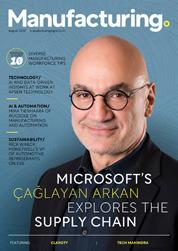
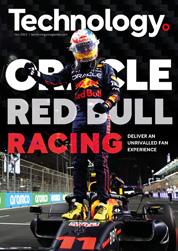
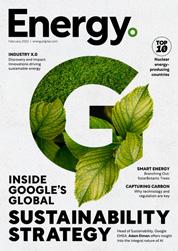
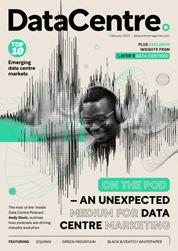
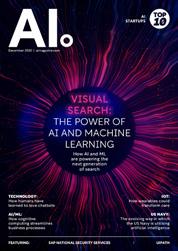

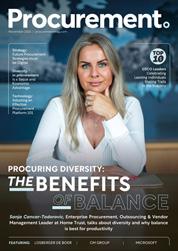
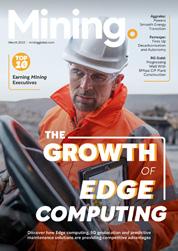
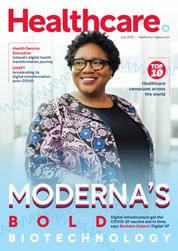



bizclikmedia.com
Ways to Work With us
We produce Digital Content for Digital People across 20+ Global Brands, reaching over 15M Executives
Digital Magazines

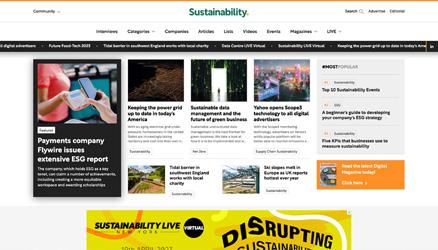
Websites
Newsletters
Industry Data & Demand Generation
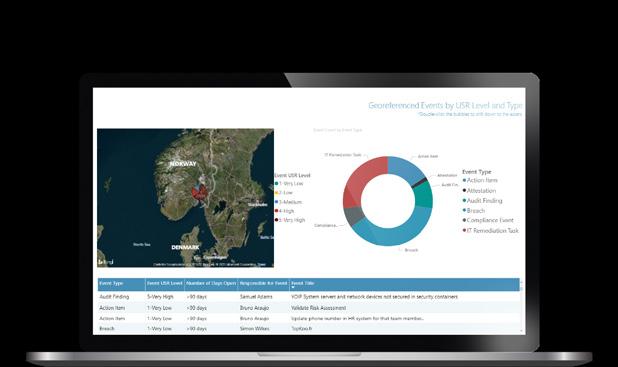
Webinars: Creation & Promotion
White Papers & Research Reports
Lists: Top 10s & Top 100s
Events: Virtual & In-Person
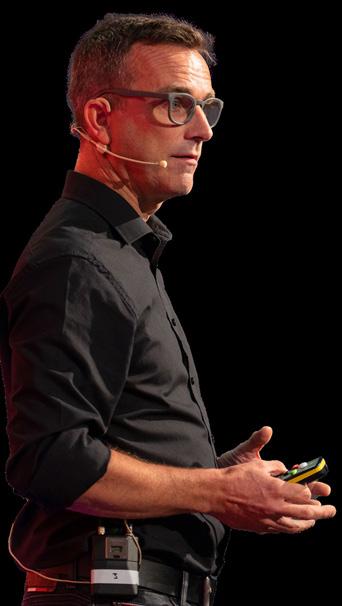
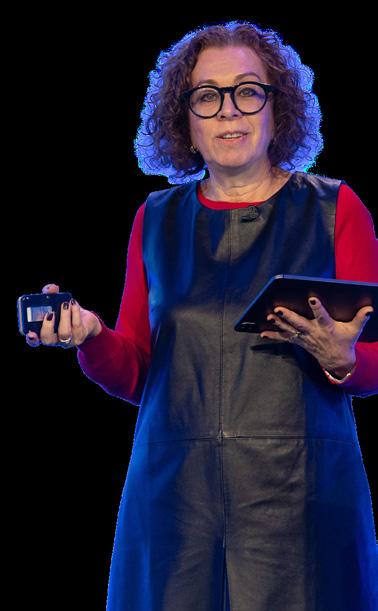
Work with us

The SupplyChain Team

EDITOR-IN-CHIEF
SEAN ASHCROFT
CHIEF CONTENT OFFICER
SCOTT BIRCH
MANAGING EDITOR
NEIL PERRY
PROOFREADER
JESS GIBSON
CHIEF DESIGN OFFICER
MATT JOHNSON
HEAD OF DESIGN/


SUPPLYCHAIN LEAD DESIGNER
ANDY WOOLLACOTT
FEATURE DESIGNERS
MIMI GUNN
SOPHIE-ANN PINNELL
HECTOR PENROSE
SAM HUBBARD
REBEKAH BIRLESON
ADVERT DESIGNERS
JORDAN WOOD
DANILO CARDOSO
CALLUM HOOD
VIDEO PRODUCTION MANAGER
KIERAN WAITE
SENIOR VIDEOGRAPHER
HUDSON MELDRUM
DIGITAL VIDEO PRODUCERS
MARTA EUGENIO
ERNEST DE NEVE
THOMAS EASTERFORD
DREW HARDMAN
JOSEPH HANA
SALLY MOUSTA
JINGXI WANG
PRODUCTION DIRECTORS
GEORGIA ALLEN
DANIELA KIANICKOVÁ
PRODUCTION MANAGERS
JANE ARNETA
MARIA GONZALEZ
CHARLIE KING
YEVHENIIA SUBBOTINA
MARKETING MANAGER
KAYLEIGH SHOOTER
PROJECT DIRECTORS
MIKE SADR
CRAIG KILLINGBACK
MEDIA SALES DIRECTOR
JAMES WHITE
MANAGING DIRECTOR
LEWIS VAUGHAN
CEO
GLEN WHITE
THE COMMUNITY
JOIN
+
CINDERS SHALL GO TO THE BALL
POST-PANDEMIC, PROCUREMENT IS NO LONGER A CINDERELLA FUNCTION
Procurement is often seen as a cinderella function, if it is seen at all, that is. Or at least that’s the way things were, pre-pandemic, when procurement was viewed as being the driver of cost-control, and very little else.
Now, though, the C-suite understands that it is procurement professionals who drive strategic advantage in areas such as sustainability and operational resilience. But even in pre-pandemic days procurement –alone among all facets of business – had the ability to amaze, for those who could be bothered to look.

Take the Los Alamos National Laboratory (LANL), featured in this issue. LANL is run under contract by the US Department of Energy and sits in one of the most secluded spots on Earth, in the high desert near Santa Fe in New Mexico. It houses 10,000 people, and is also the lab that was at the heart of the Manhattan Project in World War II.
“We're known as the birthplace of the atomic bomb,” says Christine Hipp, Acquisition Services Management Center of Excellence Leader at LANL. “But a lot of people don't realise we still exist.”
But exist it does, and today its work includes R&D on everything from the COVID-19 vaccine to genome sequencing, but it retains stewardship of the US nuclear weapons programme.

And it is Hipp and her team who procure everything that is needed to make these and other programmes happen. Programmes such as an Arctic exploration. For that, Hipp had to source enough equipment, food and provisions to last the crew 18 months. She had to get it right. The crew were going nowhere; they would be frozen in place in an ice floe.
So don’t let anyone tell you procurement is dull. It is the oil that keeps businesses running.
SEAN ASHCROFT
sean.ashcroft@bizclikmedia.com


SUPPLYCHAIN DIGITAL MAGAZINE IS PUBLISHED BY © 2023 | ALL RIGHTS RESERVED supplychaindigital.com 7
“We're known as the birthplace of the atomic bomb but most people don't realise we still exist”
FOREWORD
CHRISTINE HIPP, ACQUISITION SERVICES MANAGEMENT CENTER, LOS ALAMOS NATIONAL LABORATORY
CONTENTS
UP FRONT
012 BIG PICTURE Will early heatwaves hit India’s agriculture?

020 TRAILBLAZER
Reginaldo Ecclissato, Making one of the world’s biggest supply chain sustainable

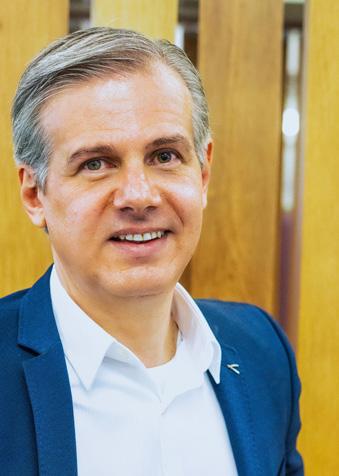
024 FIVE MINS WITH Lindsey Mazza, Global Retail Lead at Capgemini
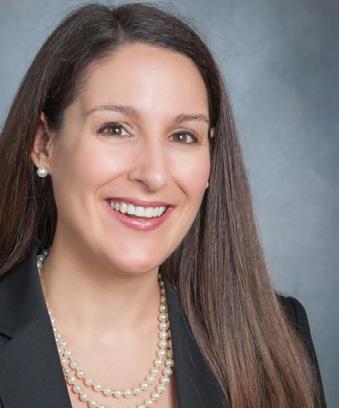

108 020 024 012
8 March 2023
5G

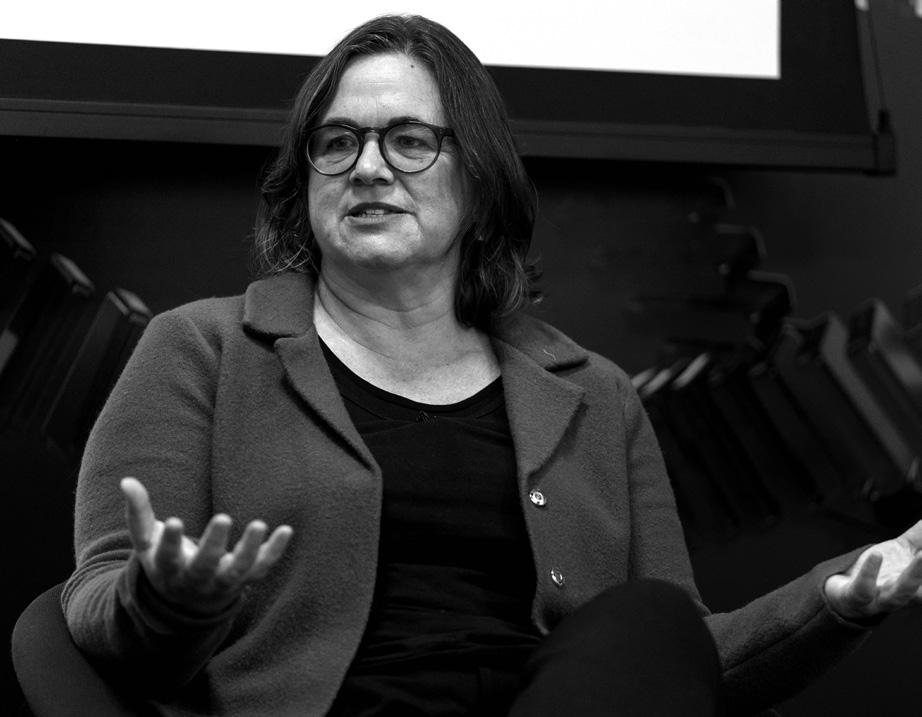

052 078 MARCH 2 023 FEATURES 052 SUPPLY CHAIN Los Alamos National Laboratory’s procurement transformation 078 LOGISTICS Future-proofing risk & resilience in global logistics 088 SUSTAINABILITY ESG Strategies for the future of supply chain sustainability 098 TECHNOLOGY Supply chains need to streamline procurement automation 108 TOP 1 0 Supply chain technologies supplychaindigital.com 9 088






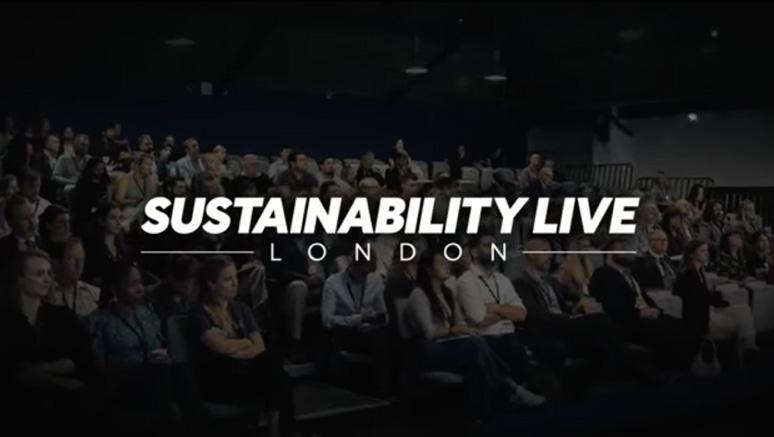
19TH APRIL 2023 VIRTUAL CONFERENCE Watch our 2022 Showreel GET YOUR PASS SPONSORSHIP Join the Virtual Event Disrupting Sustainability A BizClik Event

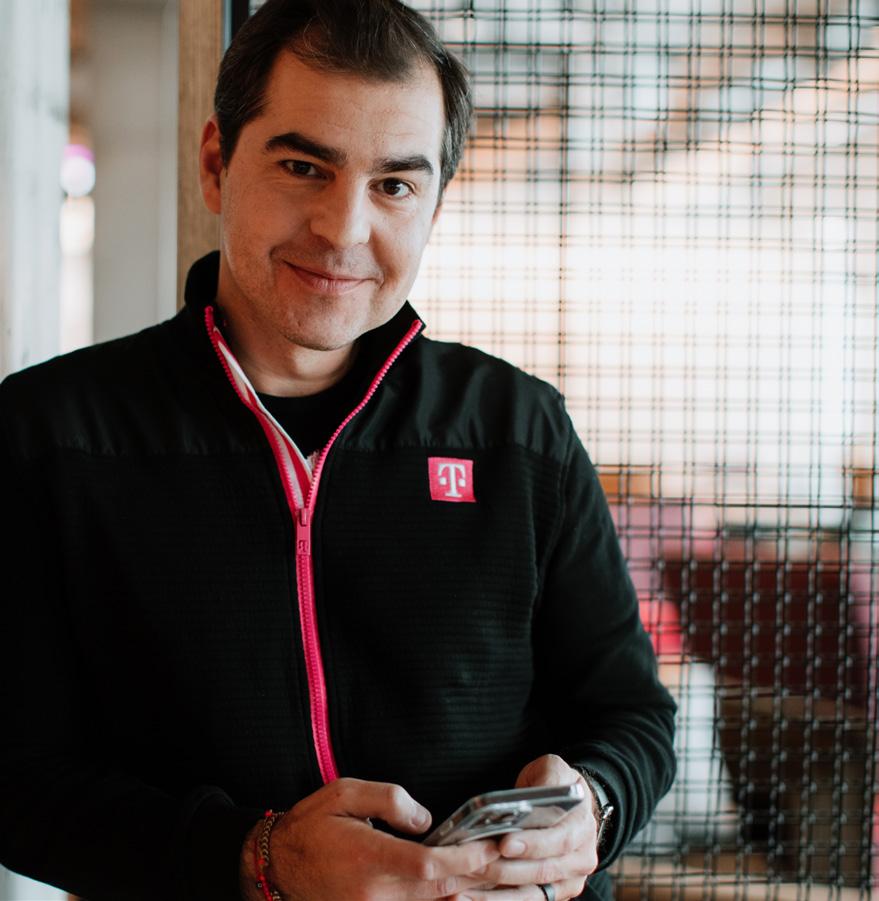



062 MARCH 2 023
030 T- MOBILE Value leadership and T-Mobile’s consumer supply chain 062 G4S Embedding sustainable procurement at G4S supplychaindigital.com 11 030
COMPANY REPORTS
BIG PICTURE
Will Early Heatwaves Hit India’s Agriculture? India

Thanks to global warming, India is beginning to see severe heat waves as early as March, with the mercury rising to a record 46°C (114.8°F) in Mumbai in March 2022.
India’s scorching temperatures are adding to the world’s food security headache, as heat stroke reduces the hours people can safely work. The country is one of the largest food producers in the world, exporting US$49.6bn of crops in 2022, including rice, wheat, tea, coffee and sugar.
More furnace-like temperatures this month, and food supply chains will again be hit.
Drawing water from a well Thar Desert, Rajasthan
12 March 2023

supplychaindigital.com 13
THE BRIEF
BY THE NUMBERS
The four elements of a circular supply chain
Source: McKinsey
G4S
READ MORE
Parts, components and material are fed back into the next production cycle
Owners run repair and maintenance services to extend product life
REFURBISHMENT
Manufacturers refresh, and resell, products they collect from consumers
Owners resell products, or rent from others
EDITOR'S CHOICE
READ MORE
Top 10: Supply chain & logistics colleges in the US
READ MORE
Among the top supply chain & logistics colleges in the US are MIT, Stanford, Carnegie Mellon & Berkeley
Supply chain professional on brink of burnout, study shows
READ MORE
A study suggests over half of procurement professionals are facing burnout due to cost-cutting pressures
Gartner in plastic packaging U-turn greenwashing warning
READ MORE
READ MORE
Gartner says businesses are ditching 'unworkable' programmes to cut plastics usage in packaging, and that many will face greenwashing storm
“THE CPO ROLE IS OFTEN ABOUT TELLING THE COMPANY WHAT IT NEEDS TO HEAR, NOT WHAT IT WANTS TO HEAR”
Jon Willescroft
Chief Procurement Officer
“WE'RE KNOWN AS THE BIRTHPLACE OF THE ATOMIC BOMB YET MANY PEOPLE DON'T REALISE WE STILL EXIST”
Christine Hipp Acquisition Services Leader Los Alamos National Laboratory
RECYCLING REPAIR RESALE/RENTAL
“MANY ORGANISATIONS ARE TURNING TO SUPPLY NETWORKS RATHER THAN CHAINS TO SOURCE GOODS LOCALLY”
Richard Jowers
Director of Value Advisory, Intelligent Spend & Business Network SAP
16 March 2023
SCOPE 3 EDUCATION
Boston Consulting Group launches the Supply Chain Net Zero Academy, to tackle ignorance-fuelled inaction on cutting Scope 3 emissions.
RETAIL OMNICHANNEL
Booz Allen Hamilton urges supply chain cyberattacks

rethink
A robotics expert with consultancy firm Booz Allen Hamilton (BAH) has sounded the alarm over the dangers to global supply chains posed by social engineering.
Dr Sean Anthony Guillory, a Senior Robotics Process Automation Bot Developer says too much talk around supply chain cybersecurity is focused on hardware and technology.
“Cybersecurity discussions often focus on data, digital infrastructure, and physical systems rather than people,” he says. “But the human element is key when modelling cyber threats to supply chains.”
It is humans, he says, on whom all supply chains depend.
“It is humans who plan, gather supplies, manufacture, deliver and enable sales,” he writes. “And it is humans who are responsible for all the communications and logistics in between.”
Dr Guillory points out this is why cyber criminals target people as a way of hacking into supply chain systems.
“In some supply chain attacks, influencing humans is the end goal, and this is why cyber leadership needs to prepare for this kind of threat.”
Retail supply chain experts from SCM data solution provider SPS Commerce say omnichannel is the future and that retailers who rely on pre-pandemic business models will be left behind.
PLASTICS IN PACKAGING
A fifth of firms will have ditched initiatives on plastic usage in packaging by 2026 predicts Gartner, who warns the move will lead to accusations of greenwashing.
PROCUREMENT PROFESSIONALS
A study from autonomous sourcing solutions specialist Keelvar suggests over half of the procurement profession is facing burnout due to costcutting pressures that are the result of rampant inflation.
W I N N E R S L O S E R S
MAR23
supplychaindigital.com 17
A POTTED HISTORY OF DIGITAL TRANSFORMATION
The pandemic has prompted a massive spike in businesses looking to digitally transform their operations, especially around supply chain. But digital transformation goes back way further than you’d expect…
1940s 1950s 1960s
DIGITISATION’S DEBUT
Claude Shannon, the father of modern digital communications theory, publishes a groundbreaking article, ‘A Mathematical Theory of Coxmmunication’, and, in so doing, paves the way for digitalisation.
CHIPS AND TRANSISTORS
The microchip – and today’s most widely used semiconductor transistor – are invented, meaning analogue computing can go digital for the first time.
EARLY DAWN OF THE INTERNET
The first ever message is sent over ARPANET, the first packet-switched network to use the TCP/IP protocol, and a precursor of the Internet.

TIMELINE
18 March 2023
1970s 1980s -1990s 2010 -present
HOME COMPUTING MARKS IT BOOM
Home PCs and computer games mark the widespread availability of computer technology, and, on the work front, this sees a profusion of data entry roles, as firms look to digitise their data.
WORLD WIDE WEB
British computer scientist Tim BernersLee invents the World Wide Web, a communication system first developed by US colleges. Automation in the workplace begins to take hold.
BIG-BUSINESS TRANSFORMATIONS
Pioneering digital transformation projects begin to show signs of success, while guidance from MIT and Deloitte helps businesses understand that strategy, not tech, is the key.

supplychaindigital.com 19
Making one of the world’s biggest supply chain sustainable
Reginaldo Ecclissato,
keeps the multinational giant’s goods moving, and in a sustainable way
The numbers around Unilever’s supply chain are staggering: its total supply chain spend in 2021 was €35.5bn, and it uses 53,800 suppliers to make sure that its many well-known brands can end up in our kitchens and bathrooms. These include Ben & Jerry's ice cream, Bovril, Cif cleaning fluid, Colman's mustard, and Comfort fabric softener, to name but a handful.
In charge of all this is Reginaldo Ecclissato, who took up his role as Unilever’s Chief Supply Chain Officer in April 2022. The move was part of a wider management shake-up at the consumer goods giant. Ecclissato’s appointment came at a time when Unilever announced it was cutting 1,500 jobs globally – reducing senior
Unilever total supply chain spend in 2021
35.5bn
management roles by around 15% and junior ones by 5%. The company said the move was designed to make Unilever a “simpler, more categoryfocused business”.
Market volatility continues to challenge
Upon taking up his latest role, Ecclissato said: “The impacts of the pandemic, such as record inflation and market volatility, continue to challenge us but, together with our partners, we will continue serving and delighting our consumers, generating mutual responsible growth with our suppliers, and furthering our positive action for people and planet, whatever challenges come our way.”
Since taking up his role, Ecclissato has overseen substantial progress, especially on sustainability.
Recently, the company announced that a further two of its factories – in Tianjin, China and Indaiatuba, Brazil
Chief Supply Chain Officer with Unilever,
TRAILBLAZER 20 March 2023
Reginaldo Ecclissato

TITLE: CHIEF SUPPLY CHAIN OFFICER
COMPANY: UNILEVER
– have been recognised by the World Economic Forum as ‘Advanced Fourth Industrial Revolution Lighthouses’ as part of the WEF’s international Lighthouse scheme, which aims to drive tech adoption. This means Unilever now has 6 Lighthouse sites across its business, including further sites in China, as well as in Dubai and India.
Ambitious zero waste to landfill targets
Ecclissato has a solid track record in sustainability at Unilever, ensuring the company’s supply chains are futurefit. As SVP of Americas Supply Chain, he achieved 100% zero waste to landfill at all dedicated distribution centres in North America. At the time, he said: “Reaching 100% zero waste to landfill on all waste streams at our North America distribution centres is a great example of how we are putting our sustainability strategy into action and reducing our environmental footprint to strengthen our business, as well as our commitment to partnership and collaboration.
“This achievement builds on the journey we began a few years ago when all of our Unilever-owned factories in North America became zero waste to landfill, but it is far from the end. We will continue to challenge ourselves and our partners in our mission for sustainable growth.”
Before his current role, Ecclissato was Executive VP Mexico, Central America & Greater Caribbean. He
Number of suppliers:
53,800
took over from Marc Engel, who moved on after 30 years with the company. In that role, he oversaw 11 countries, 12 product categories and high levels of growth, despite the pandemic.
Prior to that, he was in charge of Unilever’s supply chain in North America and Latin America, generating double-digit growth in the profitability of one of its largest regions. Ecclissato graduated from Universidade de Sao Paulo as an electrical engineer and

22 March 2023
TRAILBLAZER
started his journey at Unilever Brazil as a trainee in 1991. Two years later, he was responsible for building a new factory and the production of a new category: powder detergents.
Waste elimination a key target
In 1998, he took up a position as Supply Chain Development Manager in the UK, following this up in 2001 by becoming Home Care Logistics and Planning Director for Latin America. In 2003, he moved back to his native
Brazil, becoming Home Care Supply Chain Leader, and two years later, moved to Central America as Supply Chain Director.
Solutions to avoid sending finished goods to landfill include: focused inventory management; composting; creating animal feed; package recycling; and generating biodiesel fuel. Eliminating waste in distribution centres resulted in cost savings of more than $1.9mn in 2013, the company has reported.

“We will continue to challenge ourselves and our partners in our mission for sustainable growth”
Unilever has €1 billion euro brands
supplychaindigital.com 23
REGINALDO ECCLISSATO, CHIEF SUPPLY CHAIN OFFICER, UNILEVER
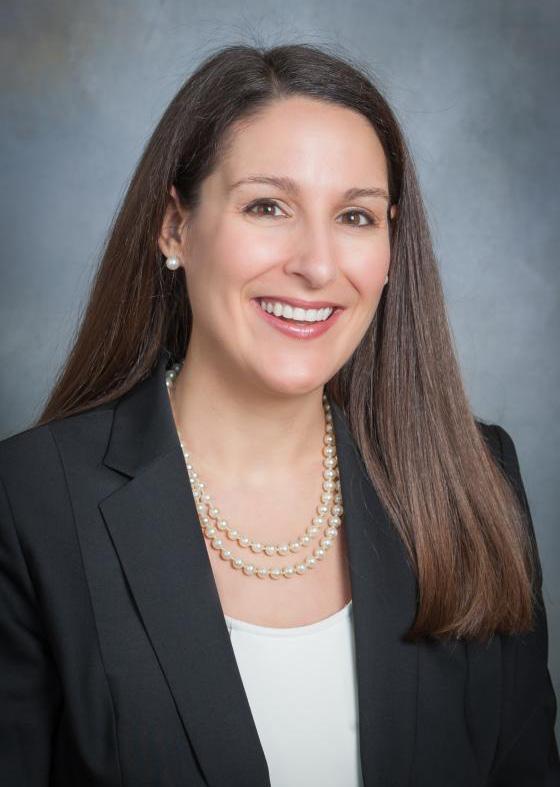
24 March 2023
“ALWAYS, ALWAYS, ALWAYS TAKE THE MORE CHALLENGING ROLE, BECAUSE THAT’S HOW YOU LEARN”
FIVE MINUTES WITH...
LINDSEY MAZZA
Q. TELL US A LITTLE OF YOUR PROFESSIONAL BACKGROUND
» I started my career in systems engineering and, over the years, have expanded my solutioning to include everything from supplier to consumer. I currently work with leading retailers to reimagine how they fulfil consumer promises. An exciting part of my role is leveraging AI, analytics, and emerging technology to reinvent operations and meet consumer expectations.
Q. HOW DO YOU MEET THE CHALLENGES OF YOUR CAPGEMINI ROLE?
» I help retailers navigate today’s many challenges and transform their businesses. I rely on my systems engineering background to research and learn where opportunities exist,
then collaborate with our immensely talented teams to deliver solutions that drive business outcomes. That might be creating intelligent, adaptive supply chain ecosystems, fulfilment options, unlocking channel growth, underpinned with technology and analytics that deliver personalised and engaging consumer experiences.
Q. HOW CAN RETAILERS COUNTER RISING OPERATIONAL COSTS?
» Automation, AI, and other leading technologies can make all the difference, and I am seeing the benefits with our clients. Data and analytics, AI, and automation in product and supply chain planning processes – not to mention that last-mile consumer fulfilment can support optimised costs – maximise use of labour, and
GLOBAL RETAIL LEAD AT CAPGEMINI, LINDSEY MAZZA, ON HOW A SYSTEMS ENGINEERING BACKGROUND IS HELPING HER SERVICE THE SUPPLY CHAIN NEEDS OF CUSTOMERS
supplychaindigital.com 25 25
further sustainability objectives. For example, analytics can be used to reduce inventory, identify underperforming areas, and recommend solutions to increase efficiency. Using real-time data and intelligent integrated planning, consumer products companies and retailers can customise the right assortment mix, and have the right inventory for each store or channel. And autonomous vehicle delivery – although early in development – could transform the lastmile delivery cost model.
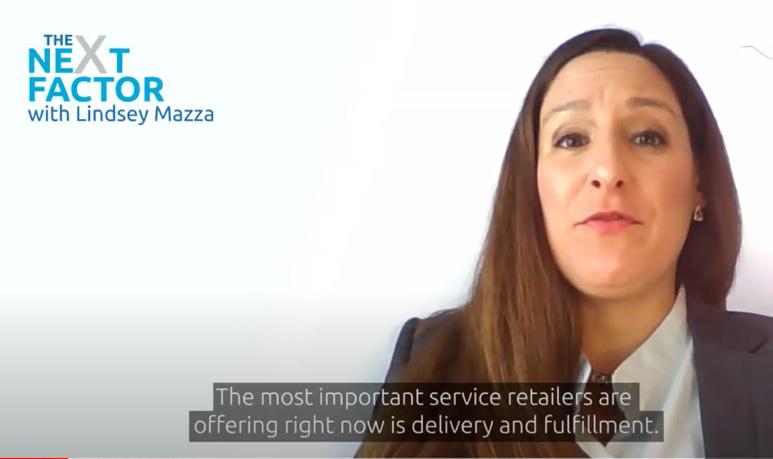
Q. HOW CAN FIRMS BEST DEVELOP SUSTAINABLE PRODUCTS?
» Sustainability can be embedded throughout the entire product
lifecycle, starting from the design process and selection of materials to end-of-life management. To address Scope 3 emissions, businesses need to consider the system as a whole. It’s also important to conduct a life-cycle assessment to evaluate the environmental impact of a product – from raw material extraction to disposal – to identify areas where the environmental impact can be reduced.
Q. CAN RETAIL BE BOTH SUSTAINABLE AND AFFORDABLE IN TODAY'S WORLD?
» Definitely, and it must be. Retailers need not sacrifice affordability or profitability to meet their sustainability goals. Our own research shows 41% of consumers globally are willing to pay more for a product they believe to be sustainable. So, while consumers are keen to buy sustainable products, they are not willing to pay more.
Brands and retailers must respond to consumer concerns by keeping prices fair – providing affordable sustainability will therefore be key. Consumers are
FIVE MINUTES WITH...
“RETAILERS DON’T NEED TO SACRIFICE AFFORDABILITY OR PROFITABILITY TO MEET THEIR SUSTAINABILITY GOALS”
WATCH NOW 26 March 2023
The Next Factor with Lindsey Mazza
also conscious about reducing waste and mindful about consumption practices. Retailers embracing circular economy will create a brand ethos that matches the ethics of the consumer.
Q. WHAT ADVICE WOULD YOU GIVE TO YOUR YOUNGER SELF?

» I’ve had tremendous leaders and mentors throughout my career. There are two lessons I’m so grateful to have learned from them: Always, always, always take the more challenging role, because you’ll learn more. I’ve built a view across the supply ecosystem by taking unexpected roles where I was able to learn. Create your next job. We can all see areas where our companies can improve. Design that role, develop a benefits case for why that role will create value, advocate for it to be in next year’s budget, and get that role.
Q. WHO INSPIRES YOU?
» I’ve always been inspired by the artwork of MC Escher.
His work changes one creature or shape into another and forces you to look from a different perspective – it encapsulates transformation through maths. What more could a supply chain strategist want, other than mathematicallyderived ecosystem transformations?!
LINDSEY MAZZA
TITLE: GLOBAL RETAIL LEAD
COMPANY: CAPGEMINI GROUP
INDUSTRY: PROFESSIONAL SERVICES
LOCATION: US
A results-focused, relationship-oriented Management Consulting
Professional who stimulates retailers and CPG companies to achieve seamless integration of process and technology in supply chain, sales, and marketing transformations. Serving clients across segments including fashion apparel, grocery, specialty goods, intimate apparel, footwear, personal care and hightech with emphasis in the areas of AI-enabled integrated planning and execution, collaborating with clients to surprise and delight consumers from demand to receipt.
supplychaindigital.com 27



more
more
more
Learn
Learn more Learn
Learn
VALUE LEADERSHIP

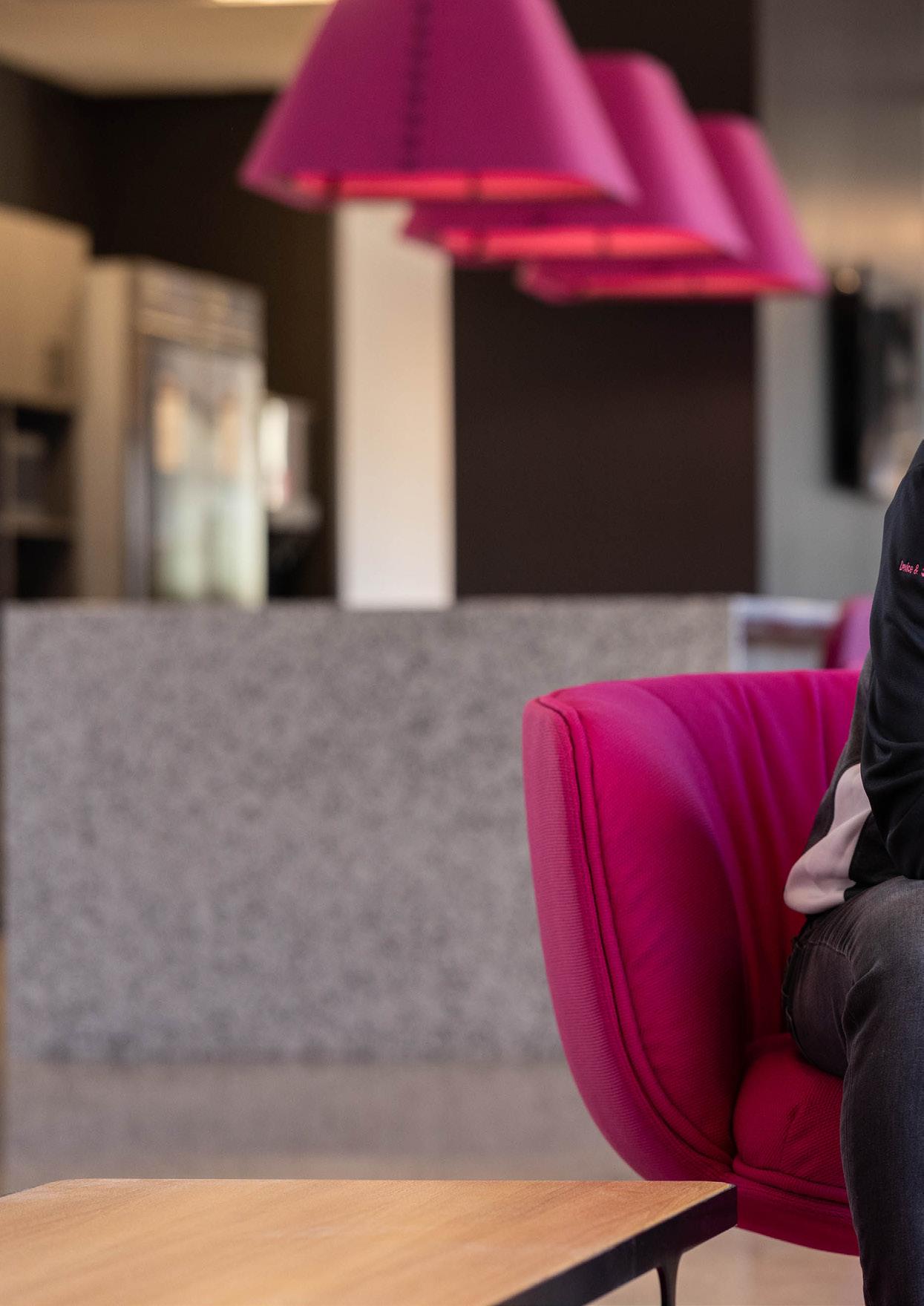
AND T - MOBILE’S CONSUMER SUPPLY CHAIN 30 March 2023
LEADERSHIP



supplychaindigital.com 31
PRODUCED BY: GLEN WHITE
T - MOBILE
WRITTEN BY: JOSEPHINE WALBANK


32 March 2023 T - MOBILE
Caballero-Vieyra, SVP
Supply
T-Mobile has achieved nothing short of becoming America’s 5G Leader, with the country’s largest, fastest and most reliable 5G network.
And, even after nearly three years of highscale merger implementation/execution and a global pandemic, the mobile giant has managed to not only retain but expand on the leading 5G service in the country.
In an exclusive interview with Max Caballero-Vieyra, Senior Vice President of Devices & Supply Chain, we learn how T-Mobile has built resilience into its consumer supply chain, tackles the unique challenges of the American market, and plans to further digital transformation in the future.


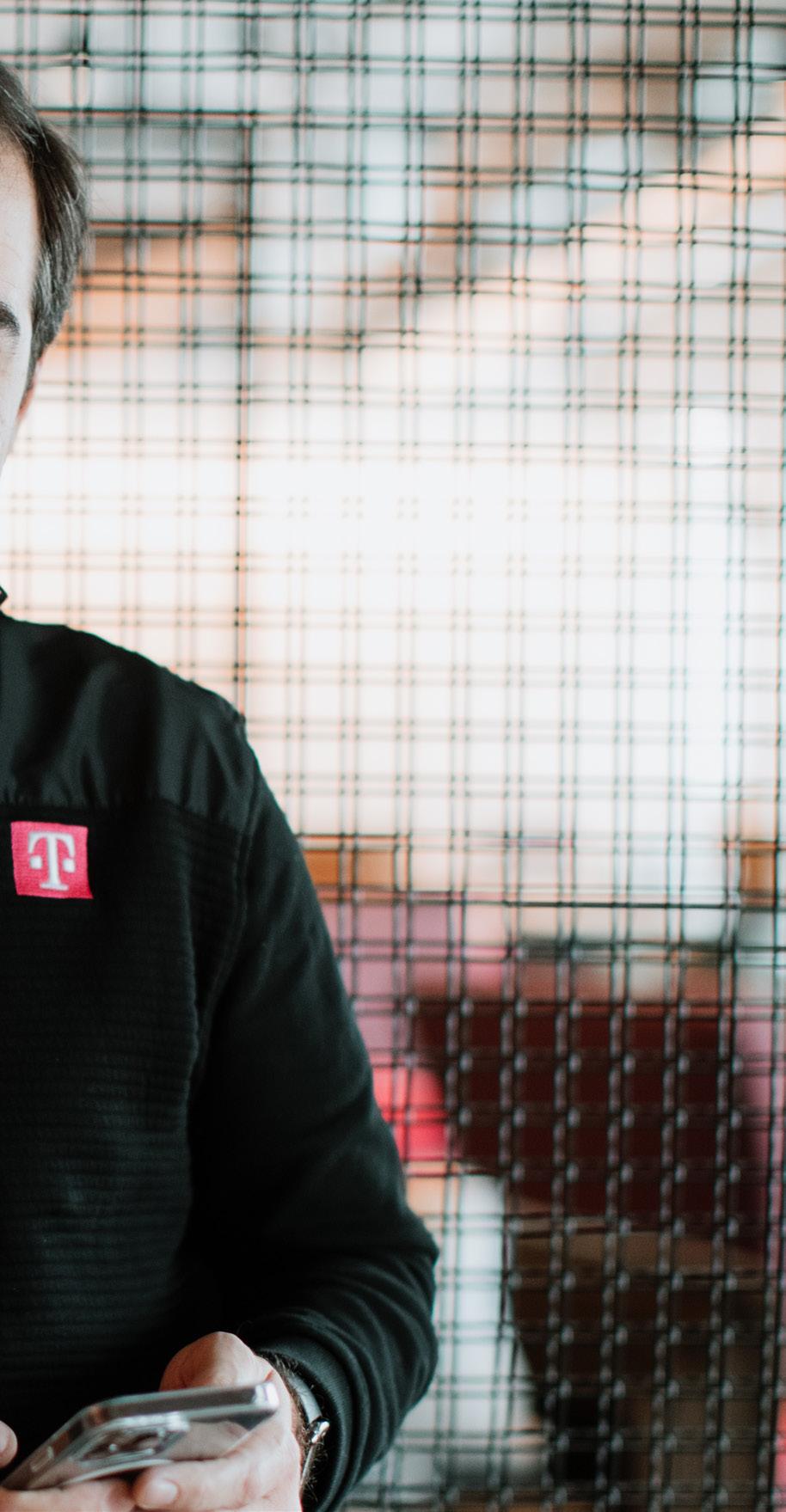
Max
of Devices &
Chain, provides exclusive insights into how supply chain transformation is asserting T-Mobile as value leader
YOUR SUPPLY CHAIN DOESN’T HAVE TO BE SO COMPLEX

The Apkudo Circular Industry Platform simplifies in the connected device supply chain so you can have real-time answers to device inventory, quality, and pricing questions – not only within your own organization, but across your global partner network.
Learn more
APKUDO FINDS HIDDEN PROFIT AND ENABLES CIRCULAR ECONOMY
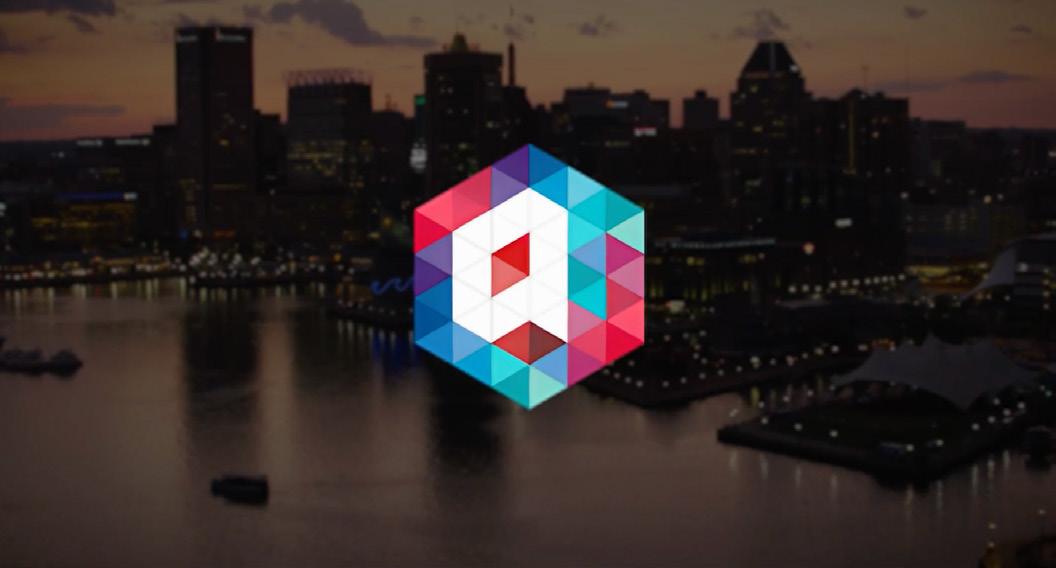

Josh Matthews and Chad Gottesman from Apkudo, share how companies can tackle supply chain complexities and benefit from the circular economy
Connected device supply chains are becoming increasingly complex as the number of products and industry participants grow. As a result, many organizations struggle with fragmented legacy systems and high labor costs yet still don’t have the transparency, security, and connectivity across the supply chain they need to maximize profits.
Apkudo helps customers tackle this complexity head on with its Circular Industry Platform, a single operating system that optimizes the lifecycle of connected devices, from launch to end of life. “No matter where a company operates within the supply chain, they’re dealing with all of this intense complexity,” says President Chad Gottesman. “Apkudo enables our customers to tackle this complexity and create new opportunities in the process.”
Apkudo’s Circular Industry Platform replaces inefficient labor and disjointed legacy systems with a purpose-built integrated solution including hardware, software, and market connections. “The Apkudo Platform ensures that items such as mobile phones, tablets, laptops, and wearables move quickly and smoothly to the highest value outcome,” continued Gottesman
T-Mobile, an early adopter of the Apkudo Platform, uses it throughout the device lifecycle. “Our platform assists T-Mobile with onboarding devices into their ecosystem, liaising with the device manufacturer, assessing each device, predicting its future issues in the field, predicting customer satisfaction, and determining the best possible value and positioning of that device after initial use,” says Josh Matthews, Co-Founder and CEO of Apkudo.
T-Mobile also benefits from the Apkudo Platform because it provides a simple and secure way to connect to their business partners that participate in the device lifecycle. “We provide the fabric that connects all of those stakeholders together and allows them to automate their business processes, gaining the best possible outcomes for the devices that move through the supply chain,” Matthews observes. “The Apkudo Platform is there for T-Mobile at every step of the way, tracking devices and ensuring they have the data to make the optimal decision every time.”
Learn more
EXECUTIVE BIO
Max Caballero-Vieyra
TITLE: SENIOR VICE PRESIDENT OF DEVICES & SUPPLY CHAIN
COMPANY: T-MOBILE
INDUSTRY: TELECOMS
LOCATION: US
Max Caballero is responsible for the end-to-end life cycle of T-Mobile’s consumer-facing hardware and accessories portfolio, accountable for selecting and procuring the devices that T-Mobile carries, and the best way to get them into customers’ hands. Within his span of control are hardware and accessories supplier partnerships, to device and accessories roadmaps, procurement and pricing negotiations, over $22bn annual hardware and accessories purchases, supply chain operations and inventory management, reverse operations, as well as used device monetization.
Prior to joining T-Mobile, Max spent 4 years at Sprint, where he most recently served as the VP of Product & Supply Chain, leading all aspects of Sprint’s P&SC organisation including portfolio, procurement of device and accessories, OEM management, Forward and Reverse logistics and operations, and second life device sales. Among his most notable achievements at Sprint, Max led all commercial negotiations with products suppliers, as it relates to Sprint’s 5G strategic initiative, and successfully secured a range of 5G products to launch on Sprint’s 5G network in 2019. In addition, Max has expertly negotiated and launched multiple lucrative iconic programmes
with suppliers at Sprint, including exclusive upgrade programmes that delight customers by allowing them to access the latest and greatest devices on an annual basis.
Before joining the Sprint executive team, Max acted as Managing Director of Brightstar – Southern Europe, based in Madrid. While there, he managed the device procurement and end-to-end supply chain (including 400 Brightstarowned points of sale) of mobile operator Mas Movil (formerly Yoigo).
Prior to moving to Madrid, Max spent 8 years in London, where he held multiple roles at Brightstar, including:
> VP Mobile Distribution managing all device procurement and OEM relationships across Europe,
> VP of Strategy leading multiple acquisitions in the Distribution and Buy Back and Trade-in business as well as opening Brightstar’s first Auction House in Hong Kong that served as a key sales channel in the rapidly growing business of returned devices.

Max holds a degree in Business Economics from Universidad Di Tella (Argentina), a Master’s degree in Distribution and Supply Chain from Texas A&M, and multiple executive coaching programmes at Ashridge Business School (Hult) in London.
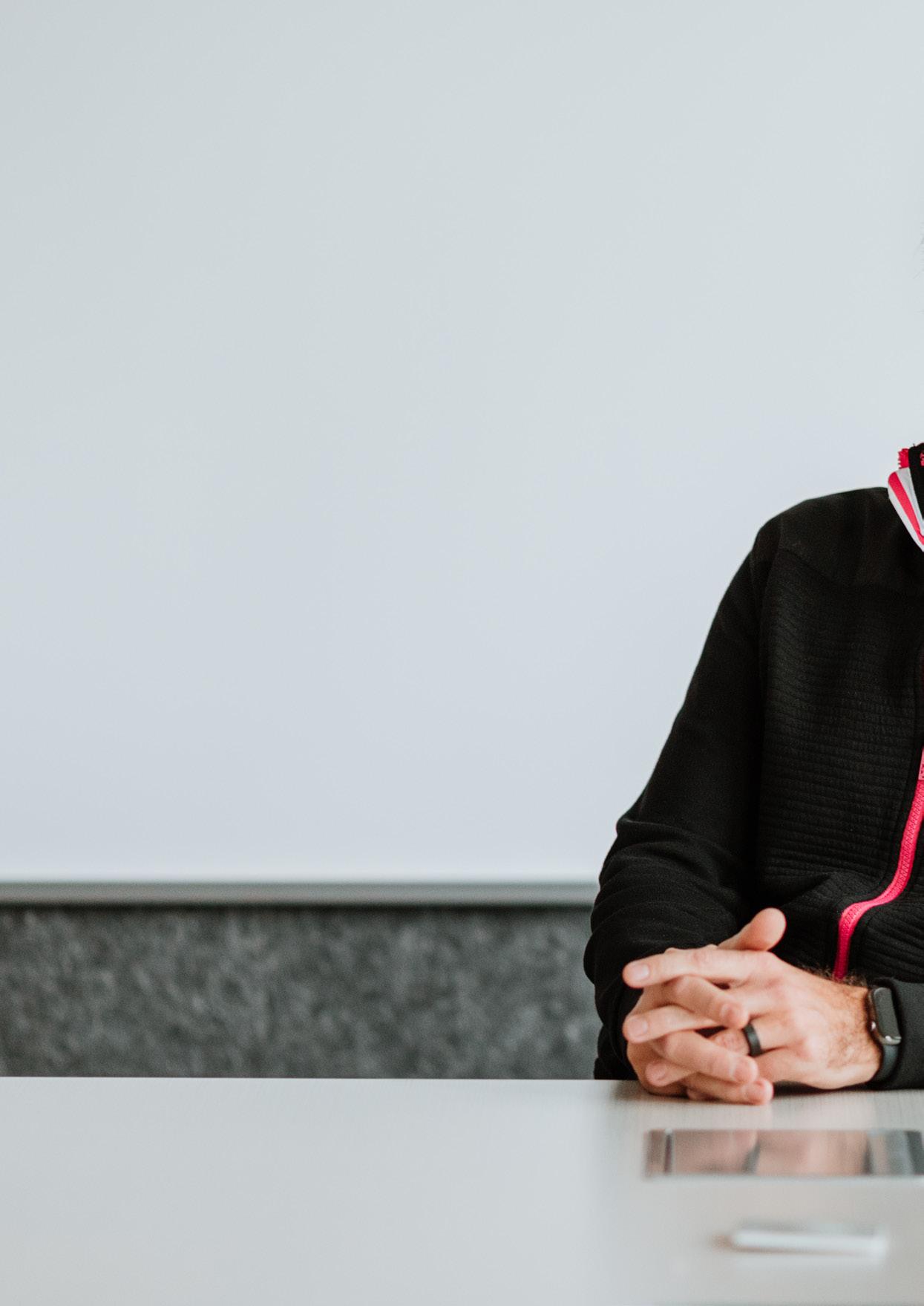
What sets T-Mobile’s supply chain apart?

The supply chain sphere is competitive, particularly within the telecom industry. In addition, a variety of obstacles over the past few years have added new complexities and introduced new risks. Competition, risk management, optimising efficiencies while maintaining an unwavering focus on innovation are the main pillars on which the Supply Chain of the future will stand.
This presents a unique challenge for leaders. Strong leadership is key, but leaders also need to understand customers’ needs in-depth and have a clear vision for the future while creating the right strategic partnerships to enable success today.
Caballero-Vieyra is responsible for managing T-Mobile’s complete portfolio of devices – including smartphones, tablets, watches, and routers – as well as the portfolio design, strategic supplier relationships, terms and pricing negotiation with partners, and the selection process across multiple channels.


“It involves everything that has to do with the operations, whether it's for sourcing, logistics, reverse logistics, or inventory management,” Caballero-Vieyra explains. “We manage thousands of retail doors, big web and telesales avenues, so we fulfil every single channel T-Mobile operates.”
The complexities of T-Mobile's consumer supply chain come from managing a large network of partners as well as thousands of retail locations. Alongside this, T-Mobile is working to ensure that it can supply the full spectrum of devices customers want at the right time and at the right place, while offering our best possible value.
“Our planning and execution are frequently impacted by changes in promotions, particularly around devices.
T - MOBILE
supplychaindigital.com 37
T-Mobile partnership helps catapult Motorola to #3 in the US Market

Motorola and T-Mobile have been doing business for a long time. However in 2020, that partnership was taken to the next level as they both started to trust each other and plan for the long term. That trust has paid massive dividends for both companies

Learn more
Motorola rekindled a selling relationship with T-Mobile in 2017, and in 2020 that partnership took the next leap. During the pandemic and times of supply uncertainty, T-Mobile trusted Motorola to deliver on their device needs and extended their forecasts to give Motorola the visibility to procure the right parts – despite extended lead times and delivery dates more than six months in the future.
T-Mobile provided Motorola with enough certainty that they would take product orders and clearly communicated their needs for a longer period, so that the duo could collaboratively plan to create combined success.

The trust that was developed and ongoing relationship that has blossomed since the supply shortages of 2020 have led to other partnerships between the companies.
As a trusted innovation partner, Motorola was the first supplier to launch a device that delivers power class 1.5 on T-Mobile’s network with its motorola edge2022. PC 1.5 brings faster, more powerful 5G to more people, helping T-Mobile live up to its claim of more bars in more places!
The partnership doesn’t stop there - T-Mobile and Motorola are working diligently to bring even more products and innovations to North American consumers, including innovative form factors, differentiated color options and enhanced communication ecosystems. Learn more
Your Partner for Smart Connectivity and Entertainment




Sercomm connects people to what they love! Network operators across the world rely on Sercomm to deliver reliable, differentiated services to enhance customers’ lives. Check out Sercomm for a full portfolio of smart home, business connectivity, and entertainment solutions.

www.sercomm.com Learn more 5G FWA IP Streamer WiFi 7 Mesh IP Cameras
And the complexity comes in managing all that demand of products – different price points, different customer needs –and ensuring that we can always have the products that our customers need, where they need them,” Caballero-Vieyra explains.
Anticipating changes in supply and demand that result from promotional fluctuations is a unique skill not often seen in supply chain leaders, yet CaballeroVieyra and his team not only do this, but go further.
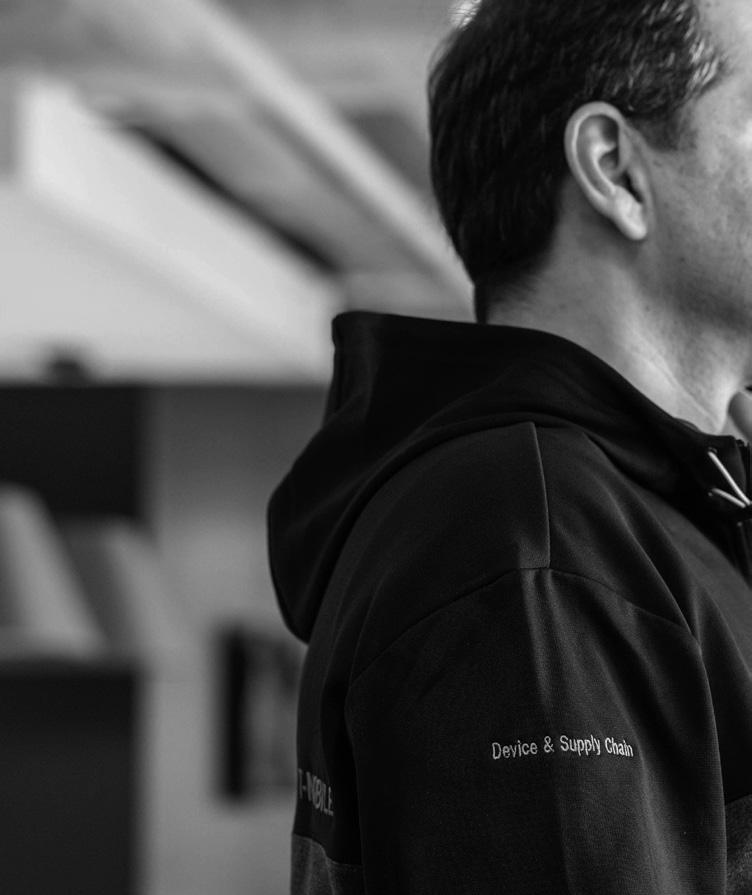
“We deliver world-class quality of service by understanding our customers and offering optionality – whether it's in products or price points – while making sure that we can always fulfil their product needs consistently and as fast as possible – whatever interaction they have with T-Mobile, whether that’s in a retail store, on the web, on the phone, or in an app.”
A permanent shift in risk management
In such a dynamic and global role, it’s highly telling that Caballero-Vieyra’s proudest achievement comes from the way that T-Mobile navigated the COVID-19 crisis.
“The US market is very, very big. Between 2020 and 2021, I was managing the merger of T-Mobile and Sprint – integrating processes and consolidating infrastructure – while the world was going through a pandemic,” Caballero-Vieyra explains.
“Being able to succeed and keep the business stable in an unprecedented environment, while navigating the volatility in the system for at least a year, was extremely challenging. That was, without a doubt, the most demanding job I've ever had.”

“We deliver world-class quality service by ensuring that we are tuned into our customers’ needs, and offering them optionality”
supplychaindigital.com 41 T - MOBILE
MAX CABALLERO-VIEYRA, SVP OF DEVICES & SUPPLY CHAIN, T-MOBILE



So, from a supply chain management perspective, how are the lessons learned being implemented now, in a consistently volatile, almost-post-pandemic world?

“At the end of the day, supply chain is a game of certainty, and you need that certainty to operate. When you are getting hit by an event like the pandemic, the certainty that’s essential to operate isn’t there,” Caballero-Vieyra outlines.
“Then you start thinking: if we're not going to be receiving the products when we expect them, what do we need to do in terms of safety stock to be able to mitigate those risks? So we started leveraging our network of supplier relationships to find alternative supply sources and protect our value proposition. That gives you options to begin making decisions, or start adjusting what you were thinking originally, based on the new information coming in day-to-day.”
Caballero-Vieyra explains how one of the critical lessons learned from this situation was the need to constantly rethink diversifying to avoid risk.
“Supplier diversity becomes crucial in minimising those unexpected events. So we implemented that across every step of the process – from the moment we are designing a portfolio of products, we start thinking, ‘What would happen if we go through a repeat of 2020 and 2021?’.
“When you go through a shock to the system like the pandemic, it brings supplier partnerships and risk management to the forefront of your thinking.”
Challenges of the American mobile market
According to Caballero-Vieyra, the main way T-Mobile differentiates from its competitors is by offering America’s leading 5G network.
“We have always been a value leader: we have fantastic prices, and the best value for those prices. And now, we also have an incredible network to match our incredible value.
“We offer amazing content to our customers and, with respect to devices or accessories, we give them tons of options. We also ensure that we design a portfolio
supplychaindigital.com 43 T - MOBILE
At the end of 2022, T-Mobile serviced a network of over 113.6mn CUSTOMERS
Driving 5G today, Preparing for 6G future
As the world’s largest supplier of smartphone chipsets, we’ve empowered US customers with connected devices. We’re excited to continue working with T-Mobile to create the best 5G products today, and on into the 6G era.
Dr. JC Hsu Corporate Vice President and General Manager of Wireless Communications Business Unit at MediaTek

Learn more

of products that covers the wide range of our customers' needs – all the colour variants, all the memory variants, and all the price points.”
Interestingly, one of the most significant complexities of T-Mobile's consumer supply chain comes from the promotion-led approach of the American mobile market, which significantly differs from other mobile markets across the globe.
“Here in the US, we operate in a very promotional market. Those promotions change and, as they do, demand for certain devices and accessories moves up and down. The complexity lies in managing the network of suppliers we have around these promotions, feeding our distribution centre with the right amount of inventory so we can meet consumers' needs while keeping an optimal inventory level across thousands of points of sale,” Caballero-Vieyra explains.
“We're talking about hundreds of products, thousands of points of sale, and a very large number of partners. And managing all that complexity in an efficient way is extremely challenging.” It certainly sounds like it.
Consumer demand, telco innovation, and supply chain evolution
In the mobile industry, building a supply chain that’s flexible enough to successfully support these complex technologies and their rapid evolution is no mean feat.
So, how does T-Mobile manage the evolving demands of the customer landscape with an ever-expanding range of mobile devices?
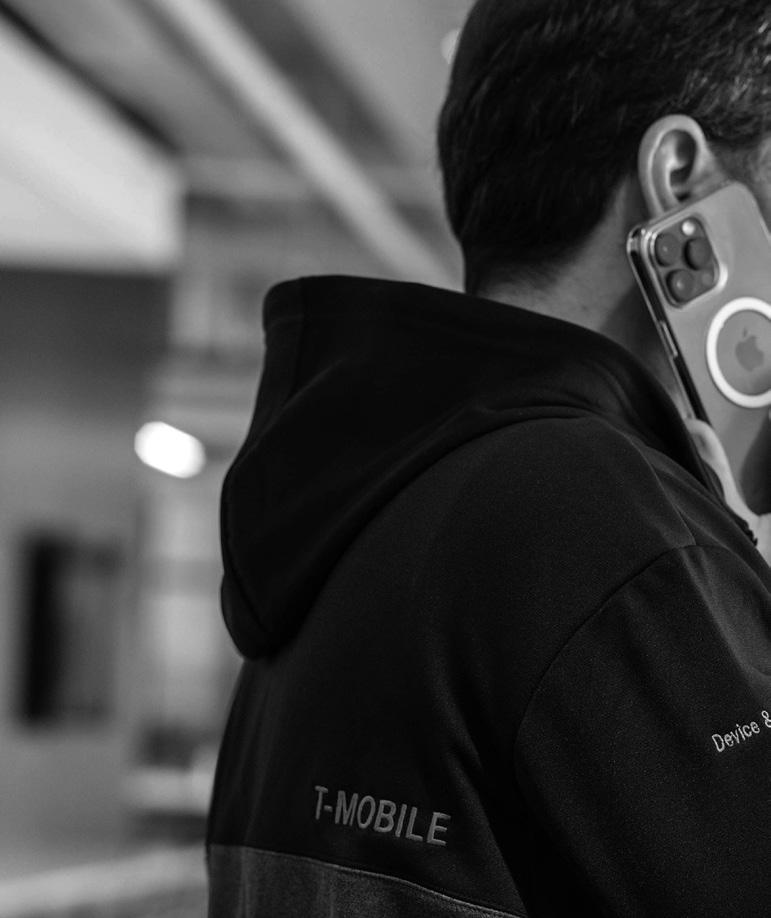
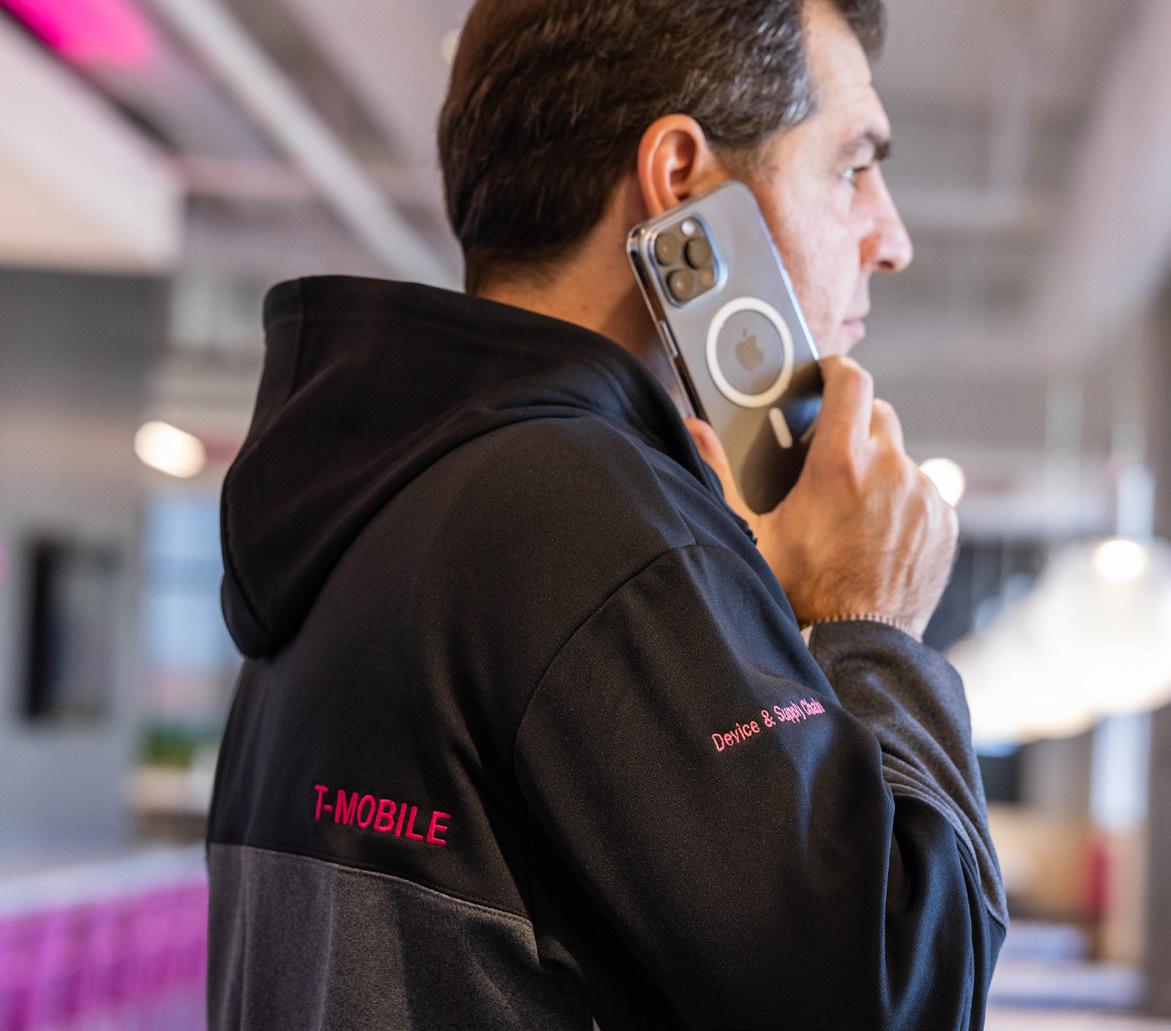
MAX CABALLERO-VIEYRA, SVP OF DEVICES & SUPPLY CHAIN, T-MOBILE
“We are a value leader –we have amazing prices and incredible ßvalue for those prices”
supplychaindigital.com 45 T - MOBILE
Connected Future With

World Leading Home Network Solution Provider
5G Indoor/Outdoor Solution
Wi-Fi Home Mesh Solution
Next-Gen Broadband Gateway

Learn More
“We need to give customers what they want. So, we design a portfolio of products, ecosystems, and experiences that fit every price point, every consumer lifestyle, and every segment of the market,” says Caballero-Vieyra.

“Sometimes, businesses require different products than consumers. So we need to think broadly and try to make it so that we always have a path to every customer, that we always have the product that best fits their needs and their desires.”
For T-Mobile, telco innovation and supply chain development are focused on retaining its position as the industry value and network leader.
“If you look at what we've been doing for the past couple of years, we've been consistently a leader in the market, in terms of giving consumers the best value
for money. We've been the value leader,” Caballero-Vieyra asserts with pride.
“And now, it’s probably the first time in the history of telecoms that any wireless company is striving to be the value leader and the product leader at the same time. Our 5G network has been ranked number one by many network experts, and they always rank our 5G performance very highly, whether it's in coverage, speed, reliability or all three.”

T-Mobile is also working closely with its strategic partners to anticipate industry trends ahead of the competition – a core element of remaining ahead of the pack.
“There's a lot of innovation coming, whether it's on the hardware design or the OS. The OS has been playing an increasingly important role in the experience customers have with their devices and related
WATCH NOW supplychaindigital.com 47 T - MOBILE
Value leadership and T-Mobile’s consumer supply chain
THE WORLD’S LEADING COMPANY IN TELECOMMUNICATIONS INTEGRATION, SEMICONDUCTORS, AND OPTICAL MODULES

On July 28, 2022, T‑Mobile released their new flagship 5G mobile phones: REVVL 6 and REVVL 6 Pro which were developed and manufactured by Wingtech Technology. In addition to launching in the U.S. and collaborating with DT, the T Phone and T Phone Pro was also launched in 10 European countries. This joint collaboration between T Mobile and Wingtech Technology offers T Mobile and DT customers outstanding smartphones at a more affordable price point.
Contact us
products, because it's not just about the device anymore – it's about the entire experience. So, we're thinking about all those experiences and understanding how we can better present those to consumers on our website or in our retail locations.”
One of the key aims that T-Mobile is prioritising is continually improving the online experience for its customers.

“A lot of customers are used to buying online, particularly post-pandemic. When they make a purchase, online customers want transparency on when a product is going to be delivered,” Caballero-Vieyra says. “This is about modernising the system so that we can ensure customers have full transparency and certainty around when they’ll receive their order.”
To this end, T-Mobile’s partners are proving instrumental in enabling digital
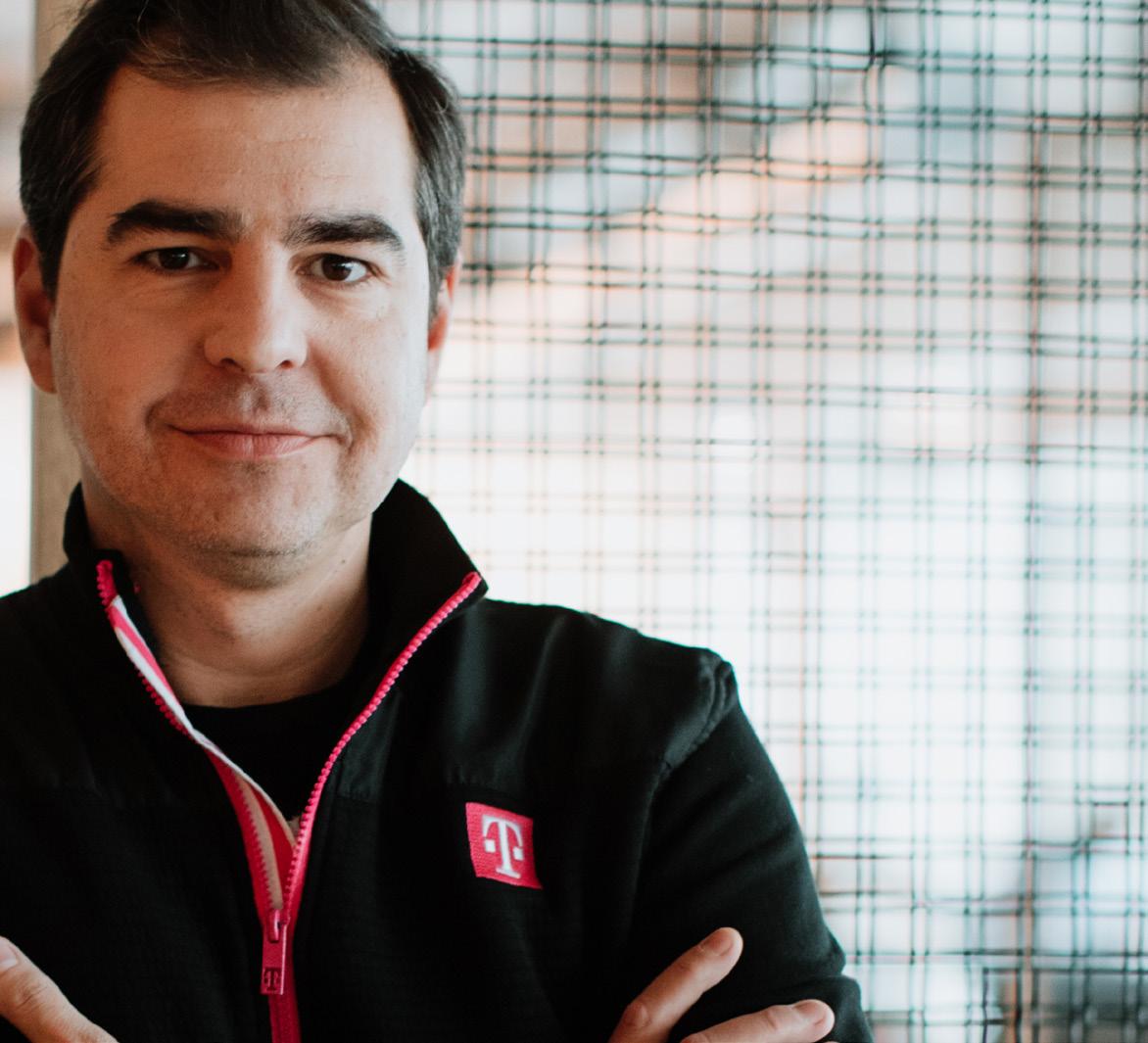
transformation and improving overall customer experience.
“We're working with multiple partners. Starting with our logistics and transportation partners, we are working to implement robust systems to ensure we can fulfil products as quickly and transparently as possible.
“We're also working on developments that will enhance everything about the postpurchase notification process, making sure we can inform customers when to expect the product.”
Caballero-Vieyra explains how, within the next couple of years, T-Mobile is anticipating a shift towards an omnichannel purchasing
MAX CABALLERO-VIEYRA, SVP OF DEVICES & SUPPLY CHAIN, T-MOBILE
supplychaindigital.com 49 T - MOBILE
“All things considered, supply chain is a game of certainty and you need that certainty to operate”

 MAX CABALLERO-VIEYRA, SVP OF DEVICES & SUPPLY CHAIN, T-MOBILE
MAX CABALLERO-VIEYRA, SVP OF DEVICES & SUPPLY CHAIN, T-MOBILE
“We're talking about hundreds of products, thousands of points of sale, and a very large number of partners. And managing all that complexity in an efficient way is extremely hard”
approach. “Of course, while everybody started buying online during the pandemic, our customers want to see, feel, and touch these devices or accessories, and talk to a person about their best plan options.
“But I think digital channels will continue to grow, and customers will increasingly interact with us online and through our app,” Caballero-Vieyra predicts.
Caballero-Vieyra states that, “from a supply chain perspective”, T-Mobile then needs to “ensure that our online and app experiences are second to none.”


“For example, when a customer places an order, we fulfil that order reliably, the product gets delivered reliably and on time. And, through the entire process of buying to receiving, customers know where that product is, ensuring transparency end-to-end.”
Continued innovation is, for CaballeroVieyra, a core part of retaining T-Mobile’s industry leadership: “The companies that find and spend the resources to invest in new ways of creating value for consumers are typically the companies that end up winning. Prioritising innovation today is the key to unlocking tomorrow’s growth, so we can’t lose sight of that.”
“It’s not about being just another player in the industry. Typically, the ones that you're going to see flourishing are those partners who are bringing a new perspective, a new experience, something new consumers need (even though they sometimes didn't expect it).”
As firm proponents of industry disruption, we couldn’t agree with that sentiment more.
supplychaindigital.com 51 T - MOBILE
Los Alamos National Laboratory’s SUPPLY CHAIN

PROCUREMENT TRANSFORMATION 52 March 2023
PROCUREMENT TRANSFORMATION Laboratory’s
Christine Hipp, Procurement Leader at LANL, discusses modernising their ‘Source-to Pay’ Solution’ (S2P) by implementing SAP Ariba & SAP Fieldglass
WRITTEN BY: SEAN ASHCROFT
LOS ALAMOS NATIONAL LABORATORY, Los Alamos, New Mexico, USA

WEBSITE: www.lanl.gov
INDUSTRY: Defence and Security
PRODUCTS AND SERVICES: Nuclear Energy Technology and Energy Security Solutions
EMPLOYEES: 13,806
REVENUE: US$4BN
supplychaindigital.com 53
In one of the most secluded places on Earth, in the high desert near Santa Fe in New Mexico, 10,000 people work in one of the most cutting-edge facilities in the world – one that, as part of the Manhattan Project in World War II, was instrumental in developing the first ever atomic bomb. The Los Alamos National Laboratory (LANL) is one of 16 R&D laboratories run under contract by the US Department of Energy.
“We're known as the birthplace of the atomic bomb,” says Christine Hipp, Acquisition Services Management Center of Excellence Leader at LANL. “A lot of people don't realise we still exist.”
Today, LANL undertakes R&D on everything from the COVID-19 vaccine to genome sequencing, but retains a strong nuclear function, too, having stewardship of the US nuclear weapons programme.
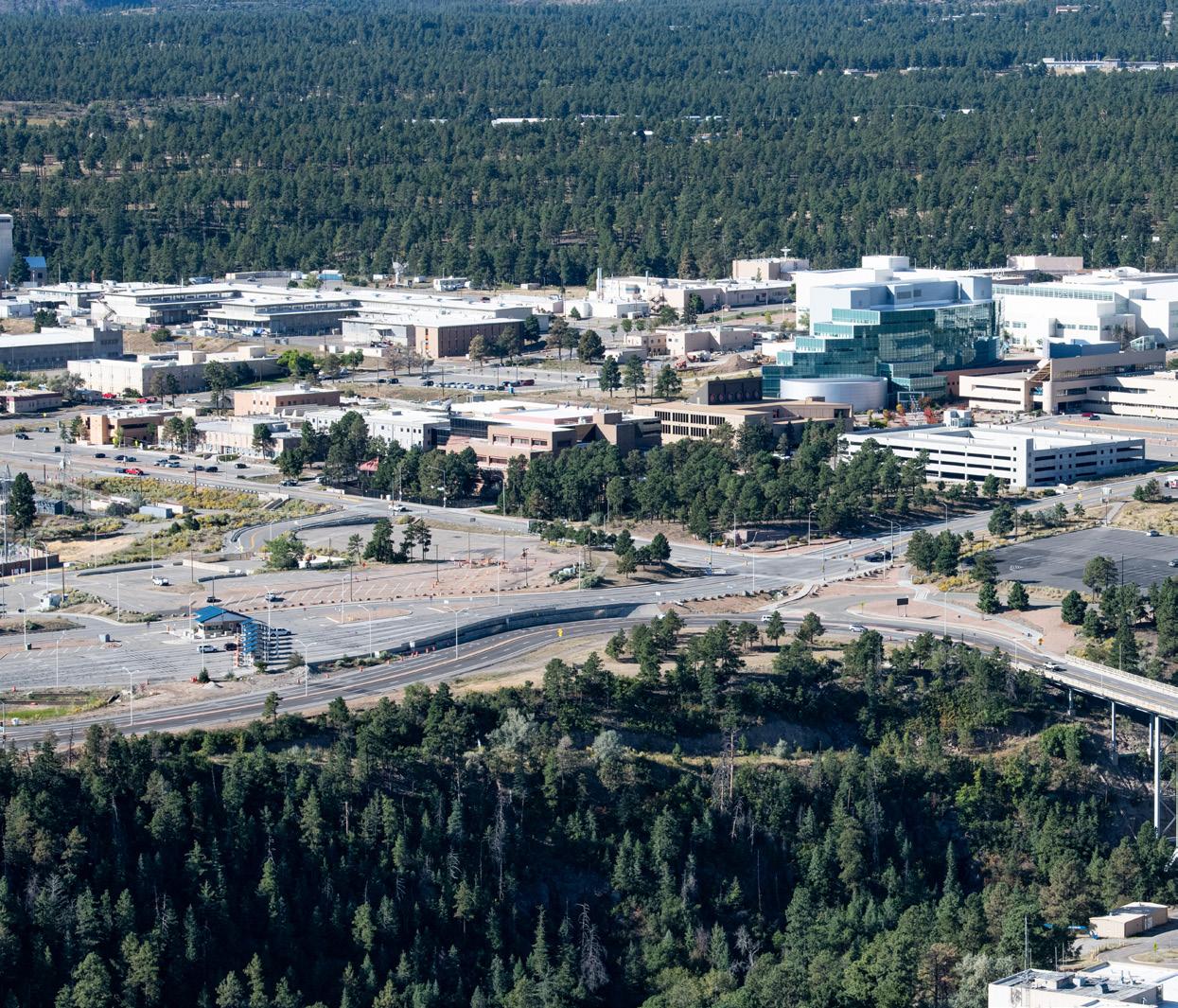
LANL procurement ‘quite unlike other organisations’
The super-sensitive nature of its work means procurement processes at LANL are, to say the least, quite unlike those of most businesses. I interviewed Hipp in Dallas at SAP Spend Connect Live – a conference and expo where SAP unveiled updated versions of its spend management solutions to highly-regulated US industries such as
54 March 2023 SUPPLY CHAIN
Los Alamos National Laboratory main campus
defence, medicine, government and space exploration. At present, this functionality is available to these sectors only in the US, but SAP has plans to also serve regulated industries outside of the United States.
LANL’s procurement transformation kickstarted in 2019, when it began its move from Oracle e-Business Suite to SAP Ariba.

“We were seeing significant growth in our procurement demand and needed to modernise our tool set,” explains Hipp. “We chose Ariba as our source-to-pay solution and implemented it between January 2020 and June 2021.”
A key reason for the switch was because Ariba, in Hipp’s words, “allowed us to
Christine Hipp
TITLE: ACQUISITION SERVICES MANAGEMENT, CENTER OF EXCELLENCE LEADER
COMPANY: LOS ALAMOS NATIONAL LABORATORY
INDUSTRY: SCIENCE & TECHNOLOGY
LOCATION: US
At LANL Christine Hipp leads the ACE (Agility, Capability, Excellence) programme for procurement. This includes implementing new technology, and, she says, “adopting robust spend analytics and focusing on strategic sourcing and category management for procurement”.
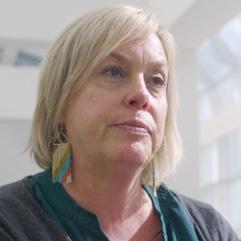
Hipps adds: “Los Alamos is a government contract-run laboratory for the Department of Energy. We are run by a company called Triad, which is made up of a combination of Battelle Memorial Institute and the University of California.
“It's always been run by educational institutions. Historically, LANL was created as part of the Manhattan Project during World War II. We're known as the birthplace of the atomic bomb. Today, we do all kinds of work, from R&D and science to genome sequencing for the Covid-19 vaccine.
“We maintain a heavy presence in US national security, being stewards of the nation's nuclear weapons programme. So it's an interesting place to work".
supplychaindigital.com 55






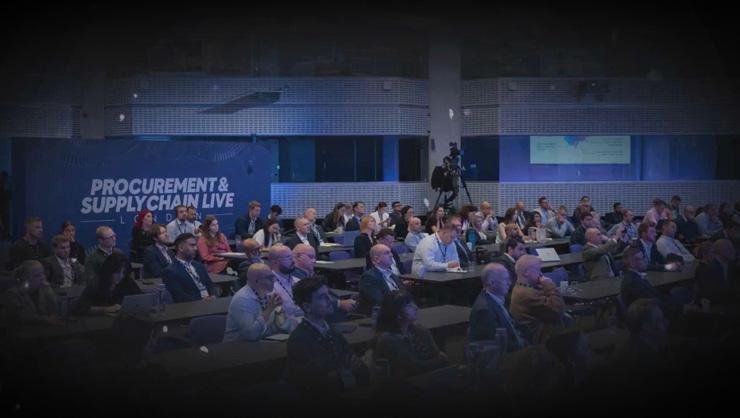
GET YOUR PASS SPONSORSHIP Watch our 2022 Showreel A BizClik Event Join the Virtual Event Disrupting Procurement & Supply Chain 28TH JUNE 2023 VIRTUAL CONFERENCE
address our compliance requirements. We have very heavily regulated procurement procedures; had we not switched many of the requirements we have to follow, they might have prevented us from streamlining and automating procurement processes.”
SAP Ariba configurability ‘was key’



Ariba’s configurability, she says, “gave us the opportunity to do exactly this, thanks to its best-in-class solutions around automation”.
Hipp says LANL its procurement transformation has delivered “new tools and capabilities”, and that these have helped it manage the $1bn uptick in
procurement spend over the past two years. The doubling of its spend in this time “is an interesting problem to have as a government contractor”.
She adds: “The Federal government needs us to expand, and so we're acquiring things to facilitate that. Our revenue has grown from $2bn to more than $4bn, and half of that goes into more procurement. We’re also modernising our facilities in Atlanta, so that has also led to a lot of large procurement spend.”
The huge increase in spend has seen LANL’s more agile procurement transformation come into its own.
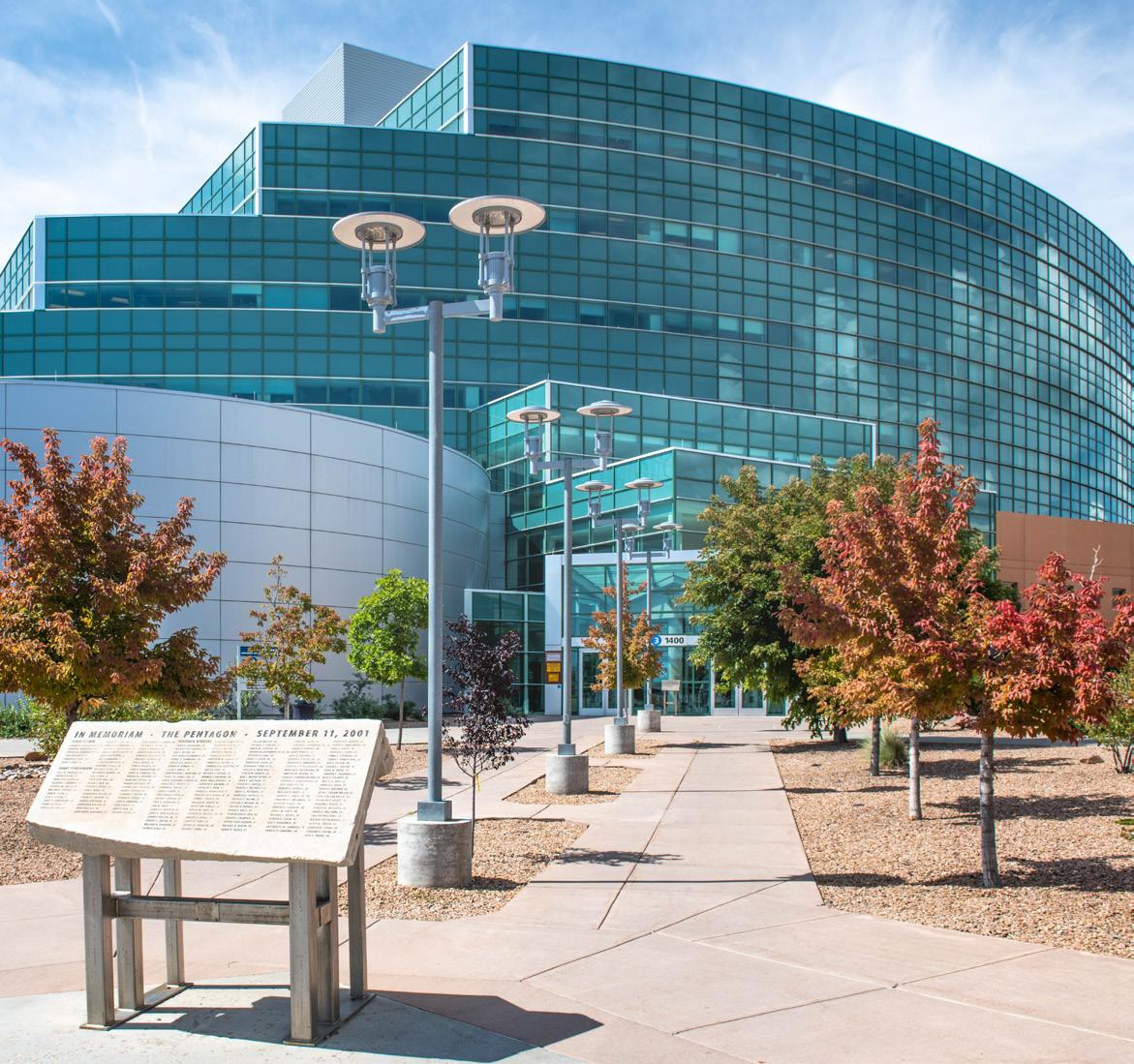
supplychaindigital.com 57 SUPPLY CHAIN
Pentagon Memorial in front of National Security Sciences Building
Expansion has meant more staff are required, and with a burgeoning payroll comes an increase in indirect procurement, such as office supplies –another reason LANL needed a more agile procurement solution.
And, as with so many organisations, the pandemic also sent Hipp and her procurement team into overdrive.

“With working from home, everybody needed a new laptop, so there was a lot of investment in IT infrastructure, and many of those people have remained working from home.”
‘Breadth of our procurement brings challenges’
Hipp also says that the breadth and variety of work LANL does brings its own procurement challenges: “We procure across space exploration, geophysics, medicine and sustainable energy, and each of these present their own challenges.
“We probably have one of the most unusual procurement functions anywhere. One of the nice things about SAP Ariba is it gives us visibility into each of these areas, which allows us to optimise our processes and address needs quickly."
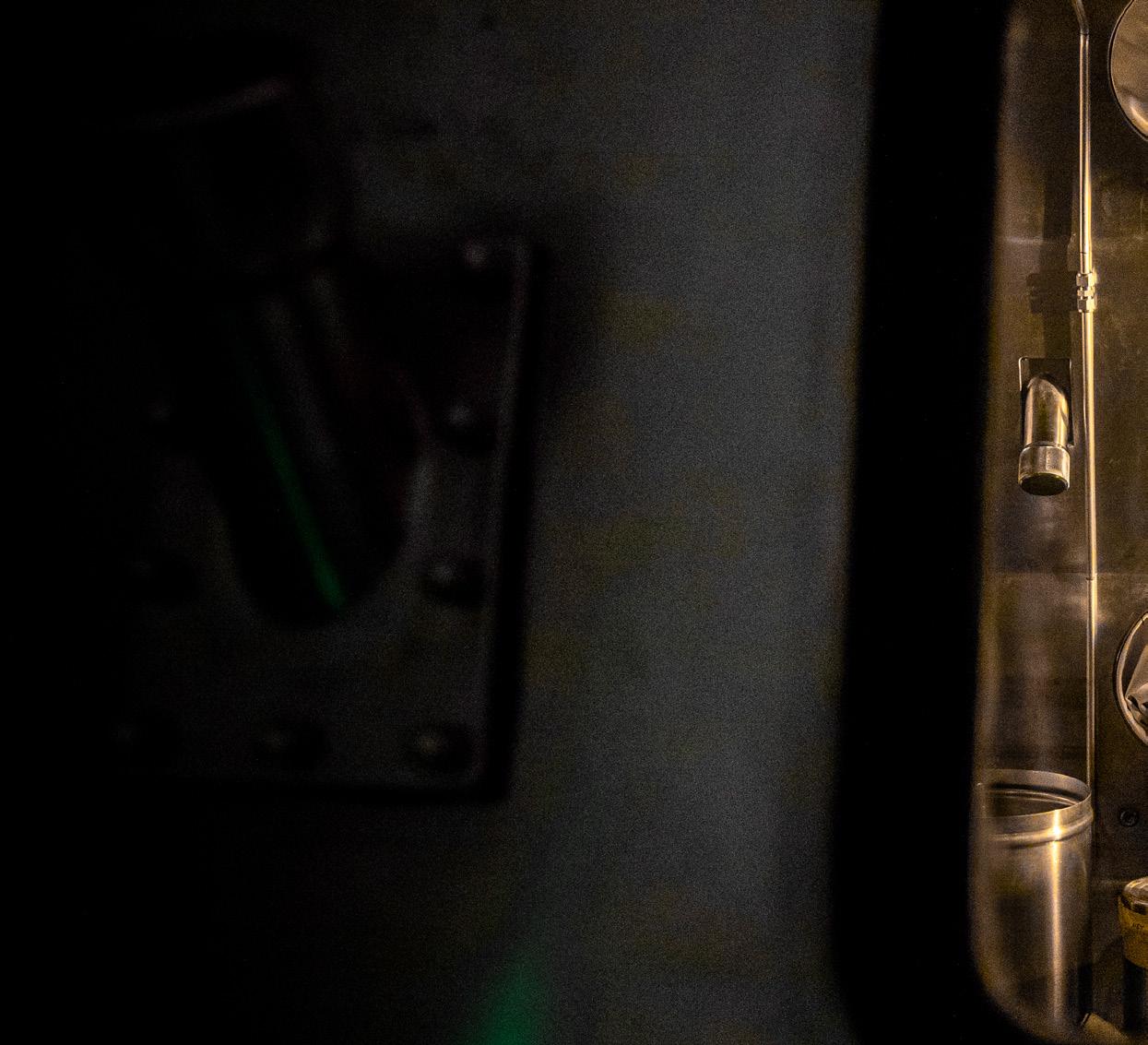
58 March 2023
(ABOVE) Physicists at a war-time Manhattan Project meeting at the Los Alamos Laboratory. Robert Oppenheimer, a key figure in the evolution of nuclear weapons, is in the middle of the second row, wearing a dark coat
Needs like that of a ship-based research team in the Arctic Circle, who were frozen in an ice floe for 13 months as they measured climate change.
“Somebody in our organisation had to figure out how to buy the supplies they needed for those 13 months,” says Hipp. “They had to work out what they needed, where to source it and how to get it to them.”
But on a more conventional note, LANL’s procurement team is – like everyone else –battling to help their organisations recover from the supply chain disruptions of the past few years.

“SAP Ariba helped us learn how to pivot from being an organisation that was very reactive in its sourcing, to being proactive. It wasn’t enough any more to source something only after somebody had asked for it. Now, we are far more focused on supplier management".
"We have established far more relationships with key strategic suppliers than we did before.
“We used the SAP Ariba Network to source more suppliers. Now, we see suppliers more as business partners, who we need to have procurement planning conversations with."
Radiological Control Technicians simulate work processes in a glove box training facility
supplychaindigital.com 59 SUPPLY CHAIN
Value-Driven Results of the SAP Ariba and SAP Fieldglass Implementation
» Better-informed decision-making based on advanced spend analytics
» Accelerated workflows, with transactions processed more than 18 times faster than before
» Transparent processes and reporting in line with requirements for public sector agencies
» Smooth transition, due to a realignment of roles and extensive consultation with users prior to go-live
» Improved supplier relationships, thanks to more efficient processes and faster payment
» Increased agility, with the ability to quickly adjust software configuration according to changing needs
» Continuous improvement opportunities based on SAP's road map

“SAP Ariba and SAP Fieldglass solutions have enabled us to drastically change the way we do business and turn our suppliers into business partners”
CHRISTINE HIPP, HEAD OF PROCUREMENT CENTRE OF EXCELLENCE, LOS ALAMOS NATIONAL LABORATORY
PROJECT STATISTICS
<8 HOURS: to process commercial transactions under US$250,000: down from 30 days
250%: Projected increase in contingent labour over a two-year period
Key to LANL’s procurement transformation, says Hipp, was Chief Procurement Officer Drew Fuller, who joined the organisation at the outset of the project.

“I’ve been an IT manager and have implemented a lot of systems, but I’ve never had a partnership with someone like Drew before, who himself was embedded into the project and determined we were going to stick with it. His commitment got me more
excited about the project and this built my commitment to it, which was very inspiring.
“The entire project was delivered over Zoom calls, which I never thought would be possible. With things like the work we had to do to implement SAP Ariba, it’s important to keep an open mind, and to not have preconceived notions. This definitely allowed me to achieve more than I otherwise would.”
supplychaindigital.com 61 SUPPLY CHAIN
EMBEDDING SUSTAINABLE PROCUREMENT AT G4S
WRITTEN BY: SEAN ASHCROFT
PRODUCED BY:
CRAIG KILLINGBACK

62 March 2023

supplychaindigital.com 63 G4S
Willescroft
Search the term ‘G4S personnel’ in Google images and the result is startling: screen upon screen of vigilant security staff clad in armoured clothing, many of whom are armed. They are protecting everything from gas and oil plants in troubled regions to cash-in-transit vans transporting banknotes and coins.
These are the frontline employees of G4S, the multinational company that specialises in manned security services.
Asked who inspires him, Jon Willescroft –Chief Procurement Officer at G4S – doesn’t even pause.
“We've got half a million people, globally, on the front line, and every day those men and women pull on their uniform, they’re putting themselves at risk,” he says. “They define our business, putting themselves in harm’s way to deliver services. It's impossible not to be inspired by these people who have the toughest jobs.”
G4S is part of Allied Universal, a leading security and facility services company that provides proactive security services and cutting-edge smart technology to deliver tailored, integrated security solutions that allow clients to focus on their core business.
It provides trained and screened security officers, as well as security systems such as access control, CCTV, intruder alarms, fire detection, video analytics, and security and building systems integration technology.

Jon
is Chief Procurement Officer for G4S – part of the world’s largest security company – and it’s his job to drive meaningful, sustainable change
64 March 2023 G4S

supplychaindigital.com 65
As a result, G4S spends over a billion dollars a year with suppliers and subcontractors, giving business to thousands of SMEs across the globe. “Suppliers and subcontractors are a critical part of how we deliver for our customers and those in our care,” says Willescroft. “This is why it’s essential we partner with the best companies and organisations across the globe.”

Managing global & fragmented team ‘a huge challenge’
Easier said than done, when you have 150 procurement people scattered across the globe. Willescroft concedes that managing a large global, fragmented team is a massive undertaking.
“Managing a global team is all about communicating and then adapting that communication to the local audience”
66 March 2023
JON WILLESCROFT CHIEF PROCUREMENT OFFICER, G4S
“It’s really challenging,” he says. “From a procurement perspective, I've got people spread across the world, and within that you've also got big cultural differences as well as a wide range of capabilities, skills and knowledge.”

This, he says, is why G4S has crystal clear minimum standards and requirements.
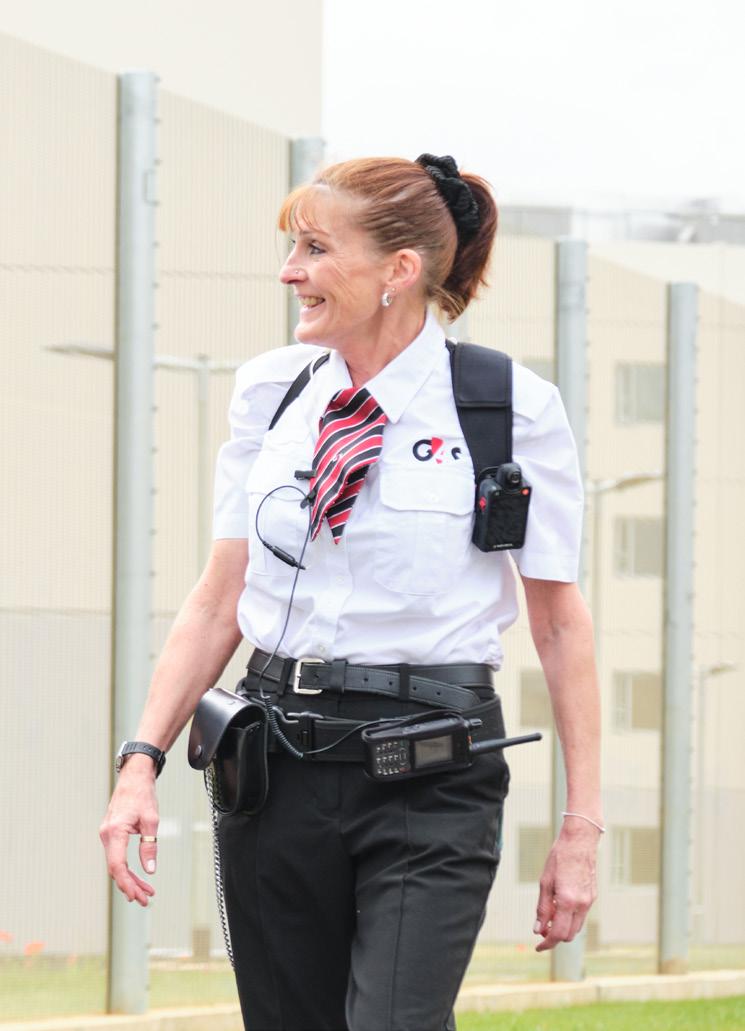
“Whether I’m talking to a procurement administrator in Columbia or a head of procurement in Belgium, I talk in a language that figuratively they understand,” he says. “And I also have to take the time to embed the message.”
“You can't be passive about it. You can't just send out one set of standards and expect people to understand and comply with them.”
JON WILLESCROFT
TITLE: CHIEF PROCUREMENT OFFICER
INDUSTRY: SECURITY
LOCATION: LONDON UK
Jon Willescroft is an ambitious, energetic and commercial CPO, specialising in reshaping procurement in large and complex organisations. Jon currently leads procurement at G4S, part of the world’s largest security company, encompassing 150 people across 90 countries, and over $1Bn spend. His focus at G4S is driving sustainable, commercial transformation across this complex global business and its supply chains. Prior to G4S, Jon held a number of procurement leadership positions in financial services and pharmaceuticals, as well as procurement advisory roles.
G4S
Willescroft also uses what he dubs “positive tension” as a management strategy.

“By positive tension, I mean regions and categories challenging one another to drive value. It’s important that this exists between my global category leads – who deal with the international business – and the regional local procurement leads.
“This is the matrix model I've employed and I think it works pretty well.”
Data is another weapon in his arsenal.
“The insight you drive from data is absolutely key. It's the glue that holds the procurement function together. Data allows us to talk about risk, performance, cost savings and sustainability in the same language, which makes it much more powerful to the wider business.”
Keeping his global team engaged, informed and motivated is another major challenge, says Willescroft: “Given the complexity and the geographic spread of the team, my objective is to make everyone feel part of a single team – one global
“If you don’t embed sustainability into your everyday processes and routines, then you’re just sticking stuff on that will eventually fall apart”
68 March 2023 G4S
JON WILLESCROFT CHIEF PROCUREMENT OFFICER, G4S
professional procurement function – and to feel proud to work in that team.”
Consistency of message is key with global teams
There are no “dark arts” involved in this. “It’s all about communicating,” Willescroft says, “and adapting that communication to the local countries.
“Within this, you also need consistency of message. You need to clearly lay out the roadmap of where we're going across our core pillars of procurement – whether that’s sourcing, supplier management, or sustainability.”
Technology helps, too. G4S is in the process of launching a global procurement capability development tool, which Willescroft says will provide people with “a map of where they are today from a development perspective against the skills and competence we'd expect them to have”.
If managing people is one onerous challenge, then protecting the bottom line is another. So, how does Willescroft drive value in such a fragmented global market?
“Wherever we can leverage globally with suppliers, we do so,” he says. “But a lot of our supply chains are by their nature localised, which is why we always make sure our category leaders are very collaborative. They need to be smart but also have a high emotional quotient. They have to be able to drive change, which is a big part of the job.”
In Willescroft’s view, this is vital. “If our people lack the right skill set or aren’t motivated in the right way, then we'll fail. You need the right people, and you need to know how they’re executing in their country.”
Because G4S is a low-margin business, Willescroft says the role makes specific demands of him.
“You're more likely to primarily think short term in a low-margin business,” he says. “If
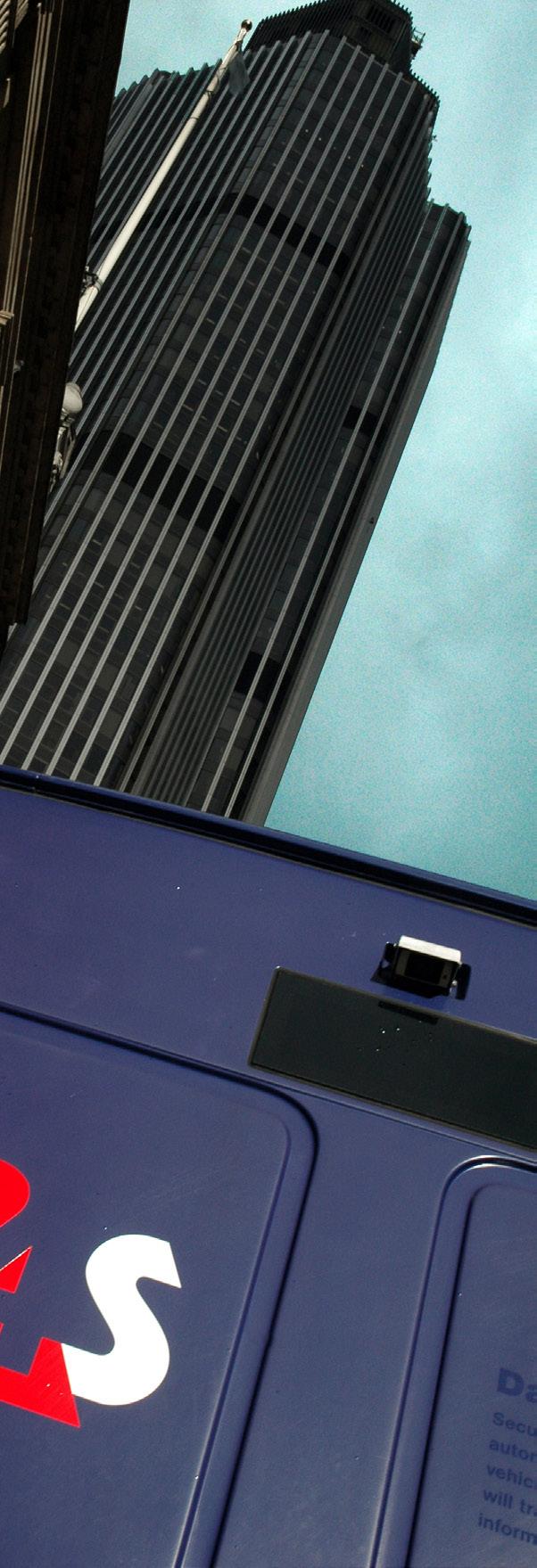
supplychaindigital.com 69 G4S



Connect with us here T 033 3939 0022 E sales@radiocoms.co.uk www.radiocoms.co.uk Let’s work together. Bringing your team closer together. Communication devices and software to keep your team connected, safe and efficient regardless of their location. Learn more
you're a higher-margin business, you have the flexibility to think a little longer term.”
He adds: “But whatever business you work for, as a CPO, you have to be a commercially-focused leader and deliver what the business needs to be successful. And what ‘successful’ looks like changes from business to business.
“I think there's more of a pull for procurement in a low-margin business like G4S, and probably the biggest challenge here is you have to work really hard to educate and drive the agenda of the business. You have to give the business what it needs, not what it wants.”
Helping Willescroft and his team give G4S what it needs is a raft of technology-driven changes. Yet, underpinning this multilayered transformation process is something that has nothing whatsoever to do with tech: rock-solid values.
Improvement only works if there are solid foundations
“Before you try and improve things, you've got to strengthen the foundations,” he says. “By that, I mean strengthening the procurement community network by evolving the controls we have in place and making sure we're delivering sustainable, measurable savings across the business. These are the building blocks.”
On top of this G4S is driving change through data insights and KPI dashboards to give it visibility, both of its internal controls and its supply chain.
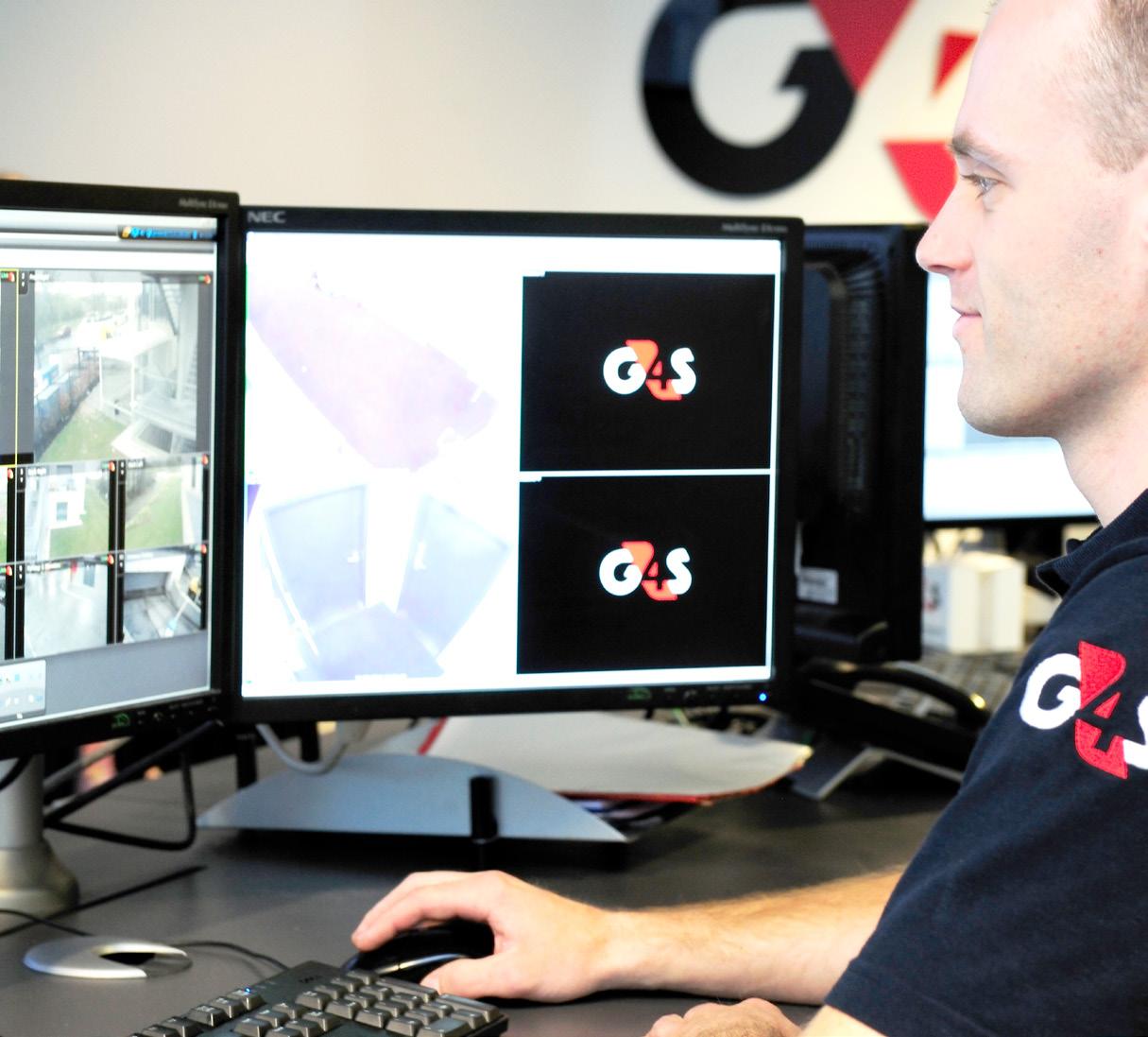
supplychaindigital.com 71 G4S
With any change project, taking people along with you is critically important – and Willescroft’s approach to this sees him again drawing from the communication well.


“You communicate clearly around purpose and direction, as well as why we're doing what we're doing. You make clear the benefits of working in a leaner organisation with leaner teams, such as there being more development opportunities for people within the team.”
He adds: “I'm also keen that everyone is stretched beyond their core role in procurement, because this puts people at
“Understanding the sustainability standards of suppliers worldwide involves knowing where the risk sits and how we can best manage that risk”
JON WILLESCROFT CHIEF PROCUREMENT OFFICER, G4S
WATCH NOW 72 March 2023 G4S
Embedding sustainable procurement at G4S
the heart of driving the change. In this way, you win their hearts and minds, rather than rendering change as something that is done to them.
G4S has, according to Willescroft, worked closely with Page Consulting on this. “They've helped us ramp up and execute really quickly in the UK on procurement capability development.”

One key area of the change process at G4S is supply chain sustainability –something that’s growing exponentially in importance across all organisations. Another is transformation around supplier
management and assurance, which is designed to give the company better visibility of suppliers, not just from a risk perspective but also in terms of performance.
The goal is to drive value and innovation, Willescroft says.
Embedding sustainability and ESG is the goal
With sustainability and ESG initiatives –digitally-driven or otherwise – Willescroft believes the danger is that “you stick stuff on to existing processes and then it just falls apart”. Embedding, he stresses, is key.
supplychaindigital.com 73 G4S
YOUR PARTNER FOR PEOPLE, PROJECTS AND PROGRAMMES, EVERY STEP OF THE WAY.
Page Consulting focusses on supporting customers with talent management, consulting & advisory services across transformation, technology, supply chain, operations and HR.


We support our clients in solving tomorrow’s challenges, today – delivering efficient, affordable, highly specialised and customised solutions.

LEARN MORE
“How do we do that? By making sure that, at a functional level, ESG and sustainability are a core part of how we are measured and how our objectives are measured. This way, everything flows all the way down to individual objectives.”
“Over the coming year, everyone has targeted individual measures that are not only around commercial delivery, but are also really clear on ESG and sustainability objectives. This means these topics are standing agenda items every time we engage with the business. Every time we sit down and review performance with the business units, or talk about sourcing, deals, or supply management performance, then sustainability is a core part of that.”
Only by constantly talking about sustainability and ESG does Willescroft believe you can fully embed them into a business. He also points to the importance of having clarity on priorities.
“Sustainability is a broad subject, and you're in danger of spinning your wheels if you don't prioritise. I have top-down support from the executive committee, who align the procurement sustainability objectives with the corporate ones.”
In this way, the areas he agrees upon with the executive committee “become our absolute focus”.
Willescroft adds: “So, we have our core standards and policies – which are like hygiene factors – and then beyond this, the focus is on supply chain transparency.”

“The CPO role is often about telling the company what it needs to hear, rather than what it wants to hear”
supplychaindigital.com 75 G4S
JON WILLESCROFT CHIEF PROCUREMENT OFFICER, G4S
Understanding the sustainability standards of its suppliers around the world is a big part of this.
‘Do we understand where the risk sits?’ and ‘Can we manage it?’ are the two key questions that Willescroft highlights here. “The areas where we're investing most time, effort and resources are net zero, supplier diversity, and human rights.”
To this end, G4S recently launched an initiative in the UK to promote a broader representation of diverse-owned suppliers in its supply chain, with the aim of furthering

diversity and inclusion throughout. Broadly speaking, a supplier is considered diverse when half or more of the venture is owned and operated by a variety of ethnicities, those with disabilities, women, from a range of social backgrounds, or those from the LGBTQIA+ community.
As part of the scheme, G4S is working with Kaleida International – a UK and EMEA B2B marketplace for tenders connecting buyers to diverse suppliers.
Willescroft says: “We’re committed to supporting diverse suppliers. Our suppliers
G4S 76 March 2023
play a critical role in helping us run a successful business, delivering excellent service to our customers.

“Greater diversity of suppliers brings a richness of thoughts, ideas and innovation. It’s also critical that our business reflects and supports the societies in which we operate, including often more marginalised, diverse communities.”
G4S is also taking big strides in its global 2050 net-zero commitment, with procurement at the heart of this programme.
Willescroft says: “We’ve made great progress this year with our fleet decarbonisation. Working closely with our UK partner, Leaseplan, over three quarters of our new vehicle orders have been low-emission vehicles.
“We’re also now getting to grips with our supply chain emissions which account for 70% of the total, and will be working collaboratively with our major suppliers to drive this down.”
supplychaindigital.com 77
FUTURE RISK IN GLOBAL

78 March 2023
FUTURE-PROOFING RISK & RESILIENCE GLOBAL LOGISTICS
Supply Chains are vulnerable to risks that can disrupt the flow of global goods and services; logistics operators must mitigate risk and enhance resilience
WRITTEN BY: SEAN ASHCROFT
In recent years, organisations have been rocked by unforeseen supply chain vulnerabilities and disruptions, in industries ranging from pharmaceuticals and consumer goods to electronics and automotive.
Risk mitigation and operational resilience has never been more important, especially in the realm of logistics, a profession that’s always been in the front line of risk.
Risk & Resilience was the theme of April 2022’s Procurement & Supply Chain LIVE event. As part of that event, a three-man panel of experts discussed risk and resilience in supply chains – alongside how this should and shouldn’t look. One panel member was Richard Jowers, Director of Value Advisory, Intelligent Spend & Business Network at SAP.

LOGISTICS supplychaindigital.com 79
Richard Jowers
TITLE: DIRECTOR OF VALUE ADVISORY, INTELLIGENT SPEND & BUSINESS NETWORK
COMPANY: SAP
INDUSTRY: BUSINESS SERVICES
LOCATION: GERMANY (HQ)
Jowers says of himself: “I work collaboratively with clients to drive their digital transformation agenda through the introduction of SAP technologies.” To do so he draws upon 25 years’ experience working with global organisations across a range of industry sectors.

Specialties include: Digital procurement solutions, procurement transformation, strategic sourcing, supplier relationship management, and logistics engineering.
Jowers said the very shape of logistics is being changed by the disruptive forces at work in today’s world, and that businesses are learning to adapt as they go. “Take the decision of some companies to hold high levels of inventory to protect themselves against supply risks – many have discovered that such an approach itself comes with its own risks. Materials and products can go out of date or become obsolete.”
As a result of this, continues Jowers, organisations are now turning to supply networks over chains to source goods locally. “It might not even be for purely logistical reasons, but for ESG purposes. They might want to support a particular part of their domestic economy, for example, or a particular region or group of people.
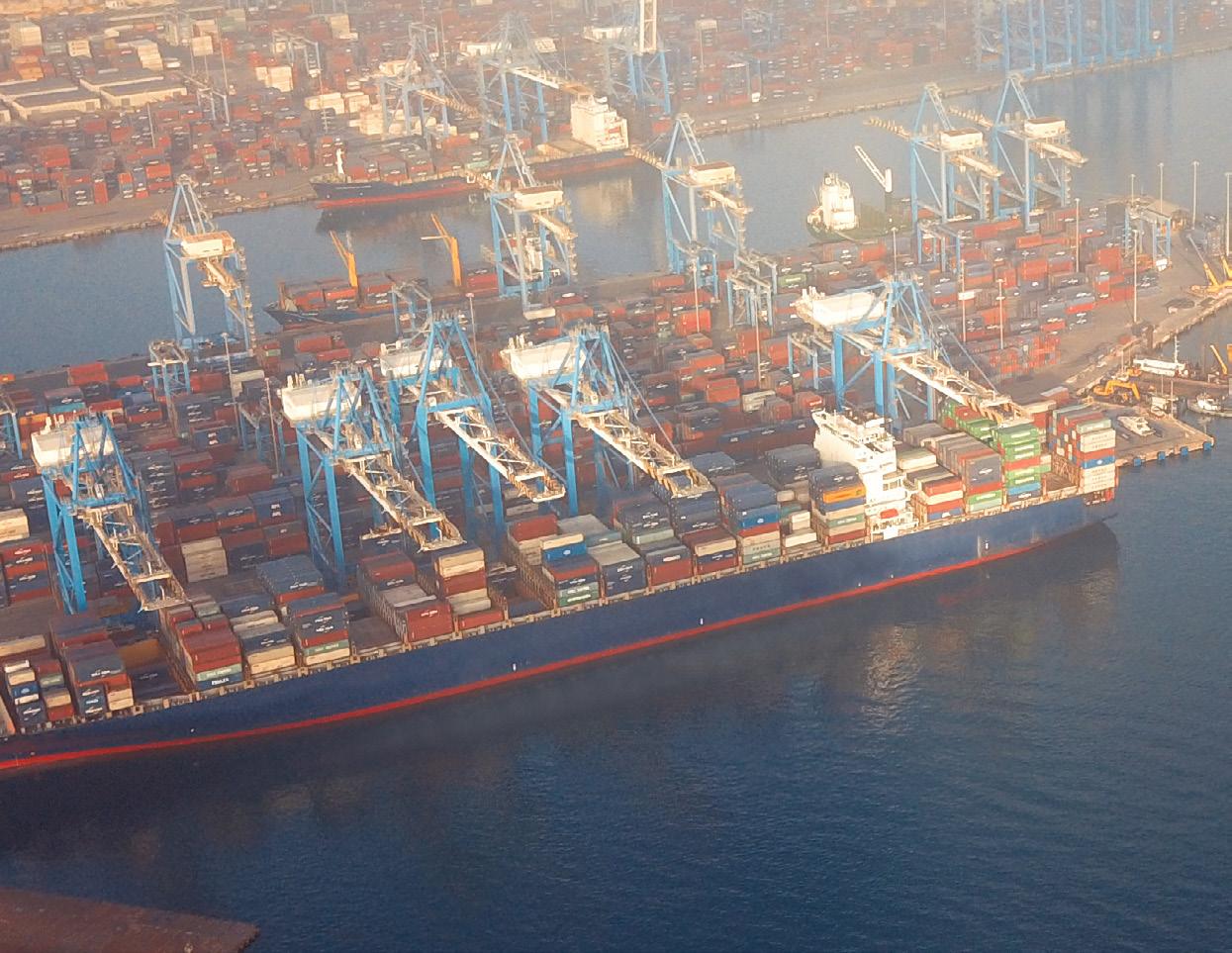
80 March 2023 LOGISTICS
Disruptive companies reassessing customer & supplier network models
“At SAP, we get asked quite often to provide analysis of what suppliers exist in this or that region, so that organisations can prioritise minority-owned suppliers. People are becoming far more mindful around sourcing.”


A fellow panellist and colleague was Andrea Ricciarelli, Sustainable Supply Chain Management Domain Advisor at SAP, who holds in-depth logistics expertise and experience, with a focus on transportation and warehouse management.Ricciarelli believes that agility around logistics is vital for businesses who not only want to mitigate risk, but also want to compete in today’s volatile markets. He cited Amazon as a game-changer here, particularly around last-mile logistics.
“Amazon has been very disruptive these past five years. Now, when we place an order, we want to know exactly when we’ll receive it. This is why so many retailers now organise logistics networks to ship products to final customers and are also organising returns. This has given rise to a different customer model in the logistics industry.”
Ricciarelli also referenced Procter & Gamble, who he says has moved from a wholesale model to a direct-to-consumer model by delivering products to endconsumers.
“In that sense, retailers are moving into the logistics service-provider space,” he says, adding that logistics service providers are also rolling with the punches of uncertainty and disruption by evolving their services.
supplychaindigital.com 81
Inform your supply chain resilience planning with our time-measured report series
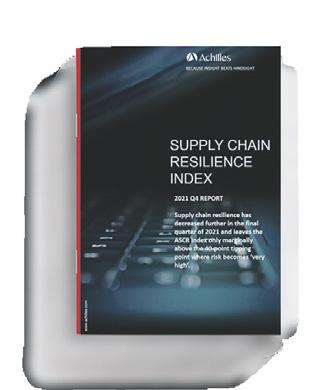
Ensuring the agility and resilience of your business and supply chain starts with identifying the risks.

Download our report to start your resilience planning today.
Download ASCRI Report
Because
Hindsight
Insight Beats
“Many logistics companies now use additive manufacturing (3D printing), which allows on-demand parts printing. They’re moving away from transporting the physical inventory of customers to producing on-demand digital inventory. This is a radical change.”
“For example,” Ricciarelli added, “Airbus is now producing 10% of its parts through additive manufacturing. In the US, UPS is building an additive manufacturing plant to produce customer parts on-demand, so it has shifted from selling products to selling services.”
Asked how important visibility is to mitigating logistical risk, Ricciarelli said such questions always lead him back to the same event: the Ever Given container ship that blocked the Suez Canal, which brought global sea shipping to its knees for weeks in early 2021.

“Every company was left wondering if it had a container on one of the hundreds of ships that were going nowhere,” said Ricciarelli. “If they did have goods on those ships, the next thing was to find out what

orders were delayed and who the customers for those goods were.”
Benefits of visibility & preparation
He said having no visibility in such a situation “is the worst thing that can happen”, before adding: “Yet the Suez Canal has been blocked five or six times in its history, so businesses really should have been prepared for it.
“Today, technology means more businesses are prepared, because they can use geolocation and telematics to know exactly where a container is en route. They can also map the relationship between orders, deliveries, items and containers, and analyse exactly what orders are in specific containers.”
“MANY ORGANISATIONS ARE TURNING TO SUPPLY NETWORKS RATHER THAN CHAINS TO SOURCE GOODS LOCALLY”
RICHARD JOWERS, DIRECTOR OF VALUE ADVISORY, INTELLIGENT SPEND & BUSINESS NETWORK, SAP
supplychaindigital.com 83 LOGISTICS
Andrea Ricciarelli
TITLE: SUSTAINABLE SUPPLY CHAIN MANAGEMENT DOMAIN ADVISOR

COMPANY: SAP

INDUSTRY: BUSINESS SERVICES
LOCATION: Germany (HQ)
Based in Milan, Italy, Ricciarelli says he has “strong sales and technical skills and keen business vision”. He has more than 20 years’ experience in logistics and supply chain management, as well as 10 years in business development at international level across the ICT and technology enabled sectors. He is a skilled speaker “with a broad perspective on the market and latest trends”, and says he has “a track record of achievements in the development & execution of growth strategies, largescale business development and joint partnerships”.
The third panellist was Tom Woodham, a Partner at PwC who works with clients to embed supply chain technology into operations. Woodham warned that, although tech-led risk mitigation is important, it is not the “be-all and end-all”, because “ultimately, it’s about your people, your processes and your data. Technology can really help, but the most important thing is to identify risk before you know it exists,” he continued.
Woodham gave the example of a PwC client company that works in aerospace: “It puts sensors on all of its parts, so not only does it know if a part is delayed, but it also knows what condition that part is in and what temperature it is.
84 March 2023
“Companies wouldn't have known such things years ago – so technology can definitely help – but really it's about identifying the key risks before they happen, so you can build that into your processes. Then it's about having your people trained, so they can respond to these problems.”
But in such a tough economic climate, what if a business can afford to invest in only one area of risk mitigation? Where should it start?
“Data,” said Woodham. “That’s the place to start, but it’s also how you invest in data. Too often, businesses invest in technology based on their most recent crisis, rather than around predicting what the next crisis will be.”
Ebb & flow of supply chain management and mitigating risks
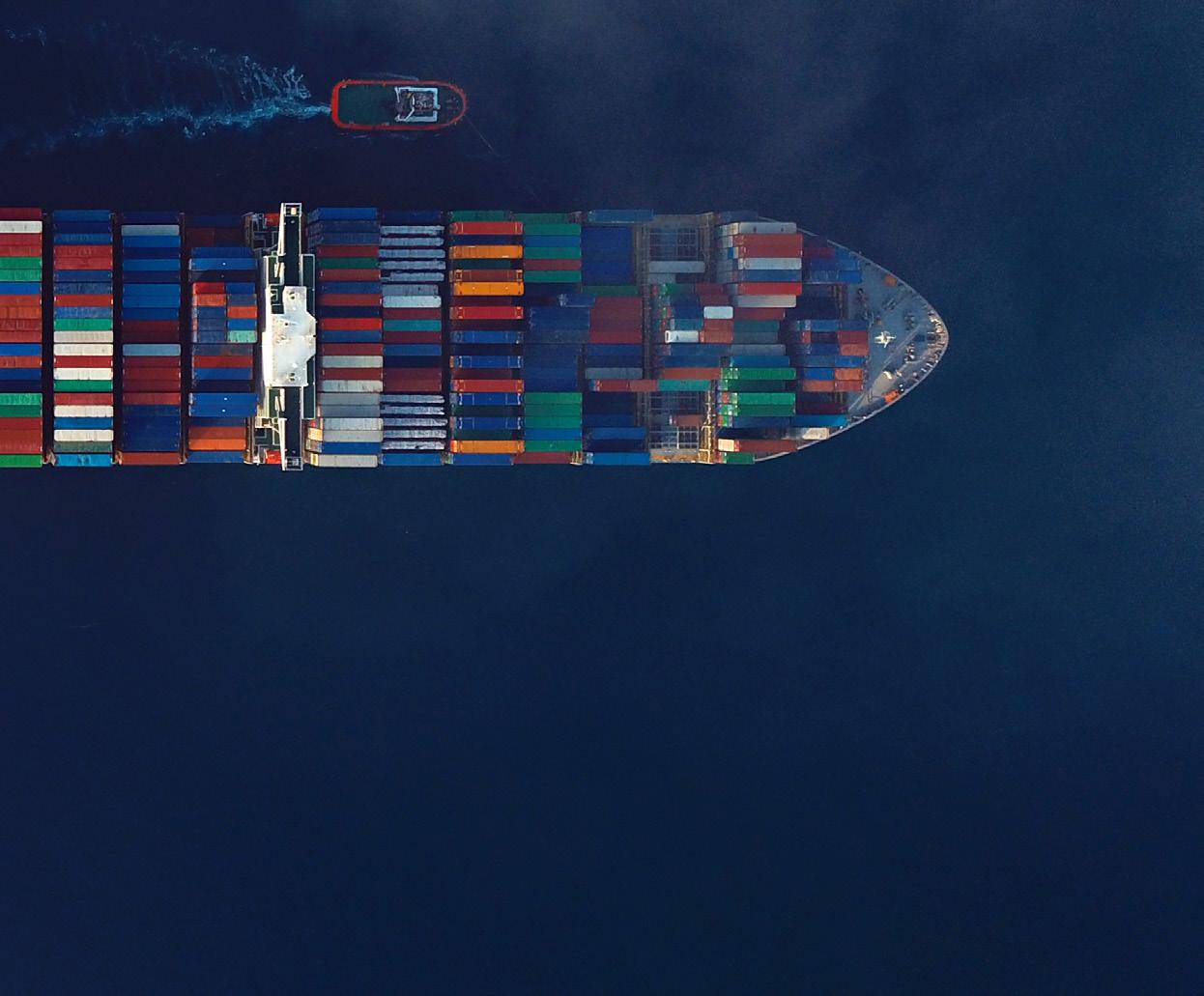
Woodham referenced the semiconductor shortage to illustrate his point: “Lots of companies invested in risk mitigation around the chip shortage, but the truth is that the shortage will sort itself out, because supply and demand usually does. The question those companies need to ask is: Why was I unable to predict the semiconductor crisis? The answer to that comes down to how they use data.”
Another strategy to which organisations are turning to mitigate logistical risk is shortening their supply chain via nearshoring or reshoring manufacturing. Woodham told
ANDREA RICCIARELLI, SUSTAINABLE SUPPLY CHAIN MANAGEMENT DOMAIN ADVISOR, SAP
supplychaindigital.com 85 LOGISTICS
“SOME LOGISTICS COMPANIES ARE MOVING AWAY FROM TRANSPORTING PHYSICAL INVENTORY TO PRODUCING ON-DEMAND INVENTORY USING 3D PRINTING”
Tom Woodham
TITLE: PARTNER
COMPANY: PWC
INDUSTRY: PROFESSIONAL SERVICES
LOCATION: UK
Woodham says “my craft is the transformation of supply chain and procurement for PwC’s clients”. He adds: “The new challenges of the digital age give me the opportunity to work with amazing teams to reinvent companies to win in the future.

“As an engineer, I have a natural bias for problem solving and how to use new technology and ideas to drive improvement. This is an exciting time for supply chain and procurement, and an amazing opportunity to make digitally enabled transformational change based on new technologies like AI, automation and blockchain.”
his audience that such strategies always come down to “a trade-off between risk and cost”, and he returned to the semiconductor shortage to drive home his point.
“Will the UK ever be self-sufficient in semiconductors?” he asks. “No, I don’t think that will ever happen, but consumers will expect the country to take a balanced approach to sourcing semiconductors, maybe by turning to nearshoring.
“It’s a similar thing to Europeans not wanting to buy fruit and veg from other parts of the world if they're not in season in Europe,” he added. “So, in that sense, supply chain strategy is driven by consumers.”

“TECHNOLOGY CAN REALLY HELP, BUT THE MOST IMPORTANT THING IS TO IDENTIFY RISK BEFORE YOU KNOW IT EXISTS”
86 March 2023
TOM WOODHAM, PARTNER, PWC
TOP 5 RISK & RESILIENCE STRATEGIES IN GLOBAL LOGISTICS
1 SUPPLY CHAIN DIVERSIFICATION
One of the key strategies for reducing risk and increasing resilience in global logistics is to diversify the supply chain. This includes having multiple suppliers, alternative transportation routes, and backup plans in place to minimise the impact of disruptions.
2 RISK ASSESSMENT AND CONTINGENCY PLANNING
Conducting regular risk assessments and having contingency plans in place is crucial for identifying potential disruptions and preparing for them. This involves identifying the key risks, assessing their likelihood and impact, and developing plans for responding to them.
3 TECHNOLOGY AND INFRASTRUCTURE INVESTMENTS
Investing in technology and infrastructure can help to improve visibility, collaboration, and efficiency in the supply chain, as well as reduce the likelihood of disruptions. This includes investing in digital technologies such as blockchain and artificial intelligence, as well as investing in physical infrastructure such as ports, warehouses, and transportation networks.
4 COLLABORATION AND COMMUNICATION
Effective collaboration and communication are critical components of a resilient supply chain. This involves working closely with suppliers, customers, and other stakeholders to ensure that information is shared and decisions are made in a timely and coordinated manner.
5
EMPLOYEE TRAINING AND DEVELOPMENT
Training and developing employees to be aware of the risks and how to respond to them is essential for ensuring a resilient supply chain. This includes training in emergency management, crisis communication, and supply chain management, as well as regular training and development programmes to keep employees up to date with the latest industry trends and best practices.
By implementing these strategies, companies can reduce the risk of disruptions, enhance their resilience, and ensure the reliability and integrity of their global logistics operations.
supplychaindigital.com 87 LOGISTICS
ESG STRATEGIES FOR THE FUTURE OF SUPPLY CHAIN SUSTAINABILITY


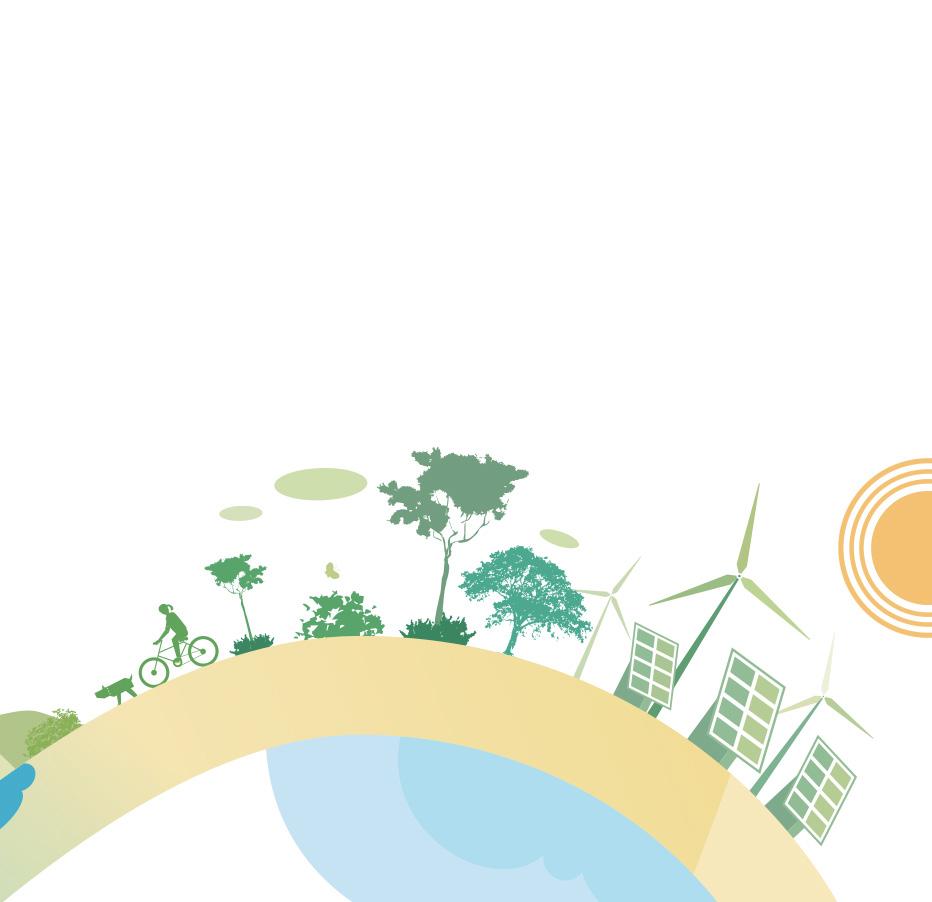

88 March 2023 SUSTAINABILITY
ESG in Supply Chain

Sustainability
 WRITTEN BY: SEAN ASHCROFT
WRITTEN BY: SEAN ASHCROFT
supplychaindigital.com 89
looks at the impact that a company and its suppliers have on the environment, society, and governance practices
The connected supply chain turns volatility into opportunity.
The e2open connected supply chain platform provides the end-to-end visibility and collaboration you need to tackle unpredictability. Build trust and confidence with your channel, supply, logistics, and global trade partners. Take control of supply constraints through direct procurement and meet customer commitments in the face of disruptions and scarcity. The connected supply chain. Moving as

E2open and the e2open logo are registered trademarks of e2open, LLC, or its affiliates.
one™. www.e2open.com
In today's world, everyone –staff, investors, stakeholders and customers – demand meaningful commitment on ESG compliance. Yet, ESG can be a grey area. A report from SaaS data, research and technology company Pitchbook suggests there is a deal of variance in investors’ definitions of what constitutes a sustainable investment – meaning where one sees a legitimate sustainable investment, another might see greenwashing.
But whatever the complexities and grey areas, one thing is certain: ESG has become far more than the nice-to-have option it was not so long ago. Now, businesses are looking to ESG to help deliver competitive advantage in a tumultuous marketplace. ESG was a hot topic at the most recent Procurement & Supply Chain LIVE event, held in London last Autumn. At that event, a discussion of ESG issues teased out many insights and advice on the subject.
The following is an edited version of this event, involving the following three speakers:
is Head of Oxfam Advisory Services

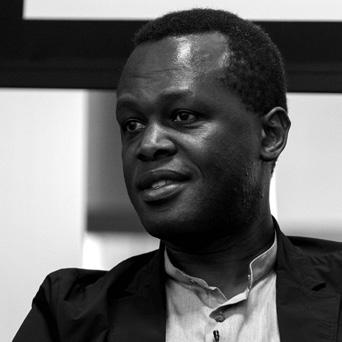
BEN NGOBI (BN)
is Global Supplier Inclusion & Sustainability Lead at Accenture
is Executive VP of US-based digital consulting firm VDart
 CLAIRE LISSAMAN (CL)
ROHIT BARDAIYAR (RB)
CLAIRE LISSAMAN (CL)
ROHIT BARDAIYAR (RB)
supplychaindigital.com 91 SUSTAINABILITY
WHAT IS YOUR ORGANISATION DOING AROUND ESG?
BN: At Accenture, we believe responsible business is integral to the future of our planet. We have a target to be net zero by 2025.
On protecting human rights in the supply chain, we work by the ten principles of the United Nations' Global Compact, a global movement of sustainable companies and stakeholders. We communicate these supplier standards to all key suppliers.
On supplier diversity, our target is to develop 250 businesses globally by the end of 2023.
CL: Oxfam’s mission is to overcome poverty through trade, and we have environmental and carbon targets mainly around our shops and our offices. We have 600 shops in the UK. Our supply chain is mostly donated goods, but we also have our own product range. We also look very closely at the environmental and social impact of what we are buying.
On inequality, we strive to drive ESG through our own research on business & human rights, and on human rights & supply chains. Often, businesses tell us that they know what they need to do on ESG but that they need help doing it, and that’s our role at Oxfam Advisory Service.
RB: VDart has 3,700 employees spread across 11 countries, so we have a pretty large global footprint. I would say that, from around 2020, ESG has become a primary focus and a key business imperative – and Accenture has helped here with its Diverse Supplier Development Programme. They are mentoring us on our ESG journey and helping us achieve competitive
TITLE: HEAD OF OXFAM ADVISORY SERVICES

COMPANY: OXFAM
INDUSTRY: CHARITY
LOCATION: UK
Claire Lissaman is Head of Oxfam Advisory Services, an organisation that provides companies with guidance around sustainability and ESG best practice. Prior to this, Lissaman was Director of Content and Impact for the Common Objective Platform, a global tech solution for promoting sustainability in fashion.
Claire Lissaman
92 March 2023
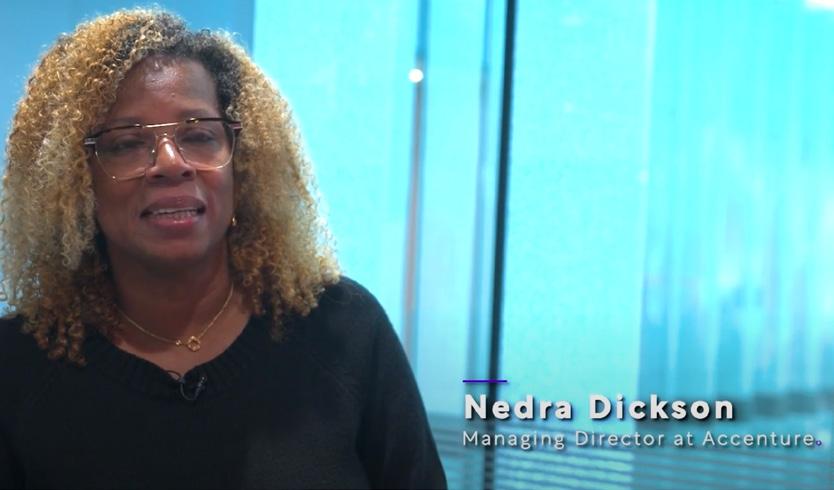
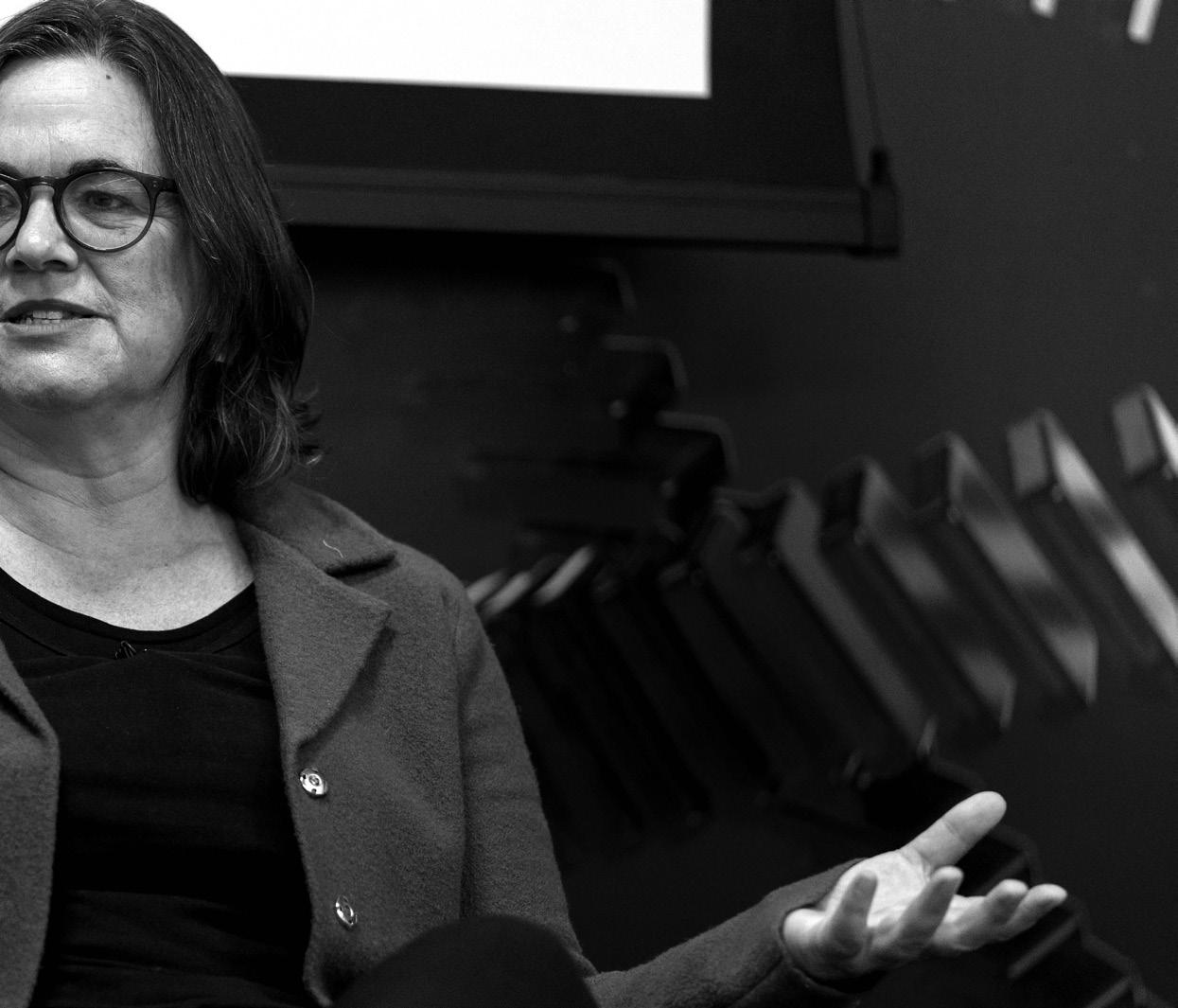
Accenture’s Nedra Dickson: The accidental supply chain diversity champion WATCH NOW
“If you're struggling to develop an ESG strategy, you need clarity on what the problem is”
supplychaindigital.com 93 SUSTAINABILITY
CLAIRE LISSAMAN, HEAD OF OXFAM ADVISORY SERVICES
advantage through ESG compliance. Our major ESG goals are helping eliminate hunger and gender inequality, while securing equal education for all. We’ve also created a five-year sustainability roadmap with help from Accenture.
HOW CAN COMPANIES DRIVE ESG COMPLIANCE IN THEIR SUPPLY CHAINS?
CL: This is a crucial area for companies to focus on. If you don’t know where your products are coming from, you've got a serious business risk. I appreciate that some sectors have complex, fragmented supply chains.
In textiles for example, where does the cotton come from that ends up in the spinning mills? But someone always knows. There's always some way of doing it.
It would be nice if we had better governments that oversaw good regulation and a healthy culture of trade unions, because then workers, farmers and producers could stand up for their own rights. But a lot of the time, we don’t, so the onus is on businesses.
If businesses campaigned collectively for strong regulation and trade unions, this would make life much easier for them in terms of ESG compliance in the extended tiers of their supply chain. It’s a challenging journey, and we need to work collectively towards change.
HOW CAN BUSINESSES STRUGGLING WITH ESG BEST BE HELPED?
BN: To make headway on ESG you need to get senior leadership involvement, and you also need to reach out to people like me – people who are invested in helping businesses reduce their environmental
Ben Ngobi
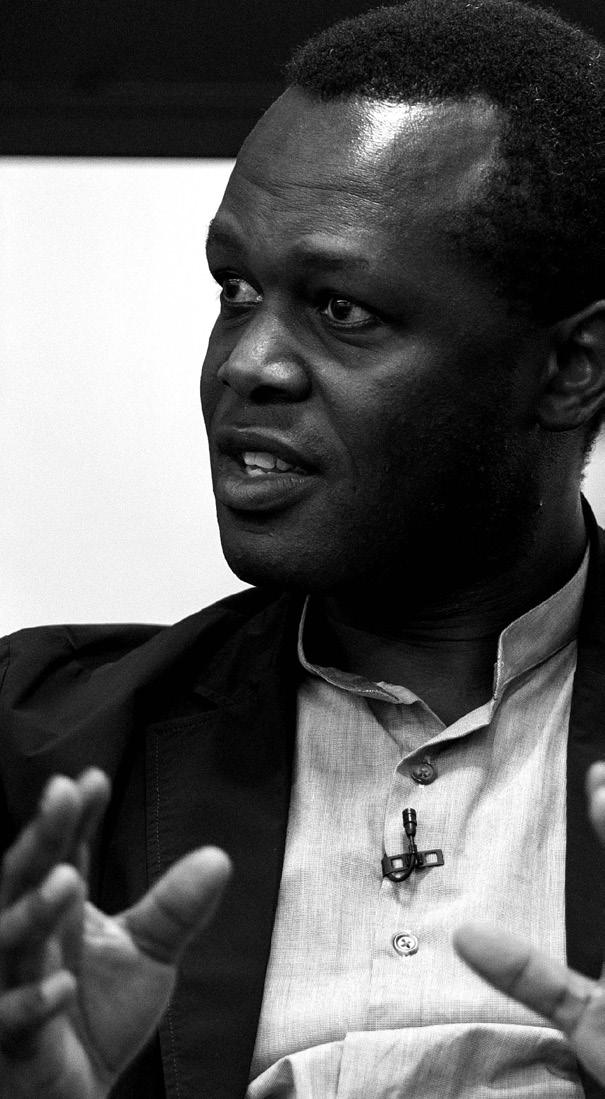
TITLE: GLOBAL SUPPLIER INCLUSION & SUSTAINABILITY LEAD
COMPANY: ACCENTURE
INDUSTRY: BUSINESS SERVICES
LOCATION: UK
Ben Ngobi is Global Supplier Inclusion & Sustainability Lead at Accenture, where he helps organisations embed ESG initiatives in their operations. Ngobi is also involved with several nonprofit organisations around supplier inclusion and sustainability.
94 March 2023
Top 10: Innovative & ESG-friendly global supply chains
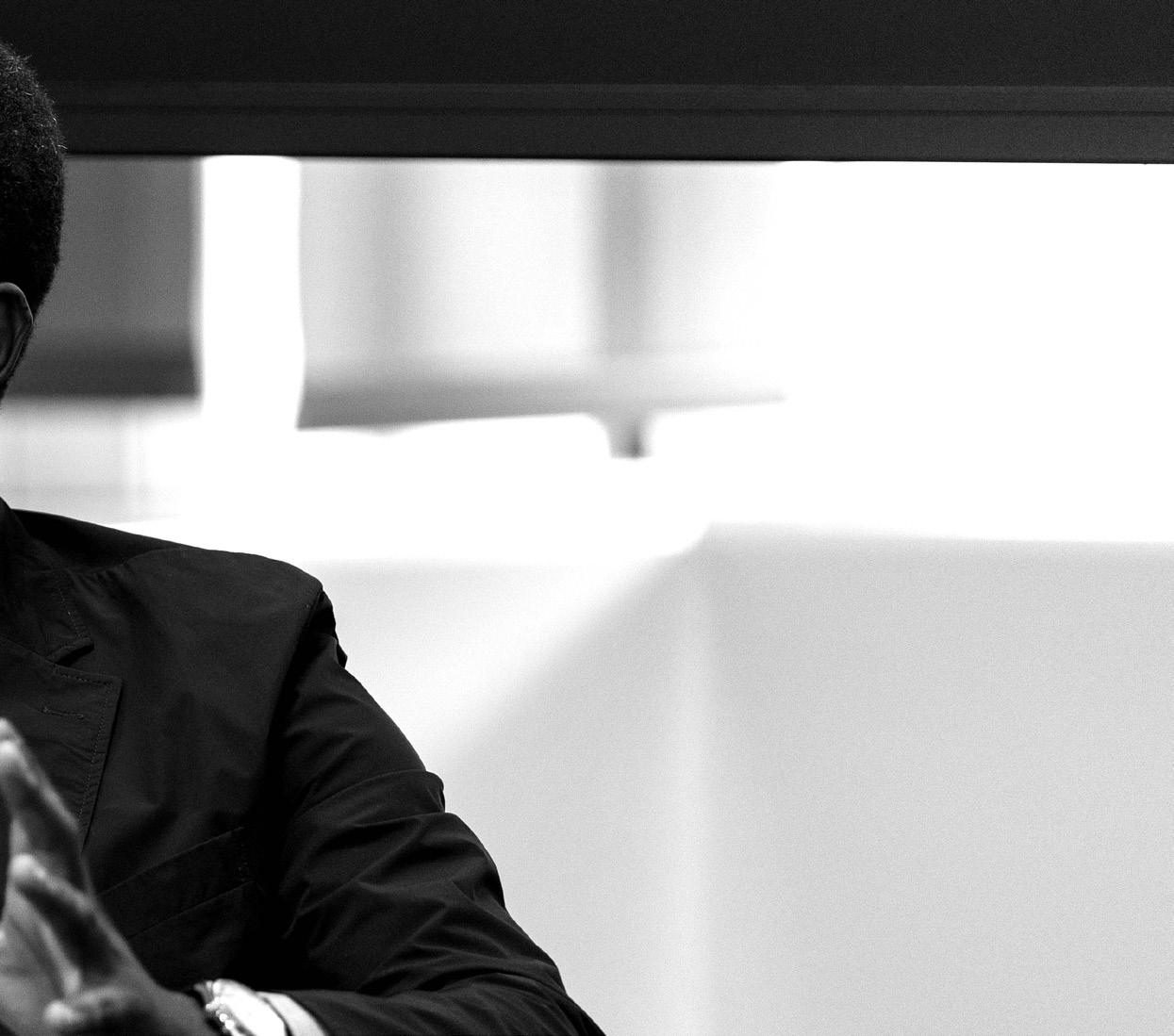
READ MORE

“To make headway on ESG, you need to get senior leadership involvement”
BEN NGOBI, GLOBAL SUPPLIER INCLUSION & SUSTAINABILITY LEAD, ACCENTURE
supplychaindigital.com 95 SUSTAINABILITY
impact. There are also lots of nonprofits that can help, such as Minority Supplier Development UK, or the National Minority Supplier Development Council in the US.
CL: If you're struggling to develop an ESG strategy, you need clarity on what exactly is the problem. Maybe you simply don’t know where to start? Or perhaps there is resistance within the organisation?
One thing that is crucial is when you have an ESG policy, it must be embedded throughout the entire organisation. It’s no good just one or two departments having ownership. Involve stakeholders in the process, especially those impacted by the work you do.
DO ALL ASPECTS OF ESG GET EQUAL CONSIDERATION?
RB: ESG reporting is itself fairly new, and the problem in the early days was that many organisations were strong on environmental but less strong on social and governance, meaning there continued to be violations of human rights and slavery practices in their supply chain. But, now, companies and countries cannot just look at one aspect and ignore others. Yet, we still see instances where companies are generally ESG-compliant but, at the same time, have been hit by a cybersecurity attack and have negotiated a massive ransomware settlement with unethical hackers.
Rohit Bardaiyar
TITLE: EXECUTIVE VP
COMPANY: VDART
INDUSTRY: DIGITAL CONSULTING
LOCATION: US
Rohit Bardaiyar is Executive VP of US-based digital consulting firm VDart, which is part of Accenture's Diverse Supplier Development Programme. As such, he engages with businesses owned by different ethnicities, women, persons with disabilities, members of the LGBTQ+ community, veterans, and others.
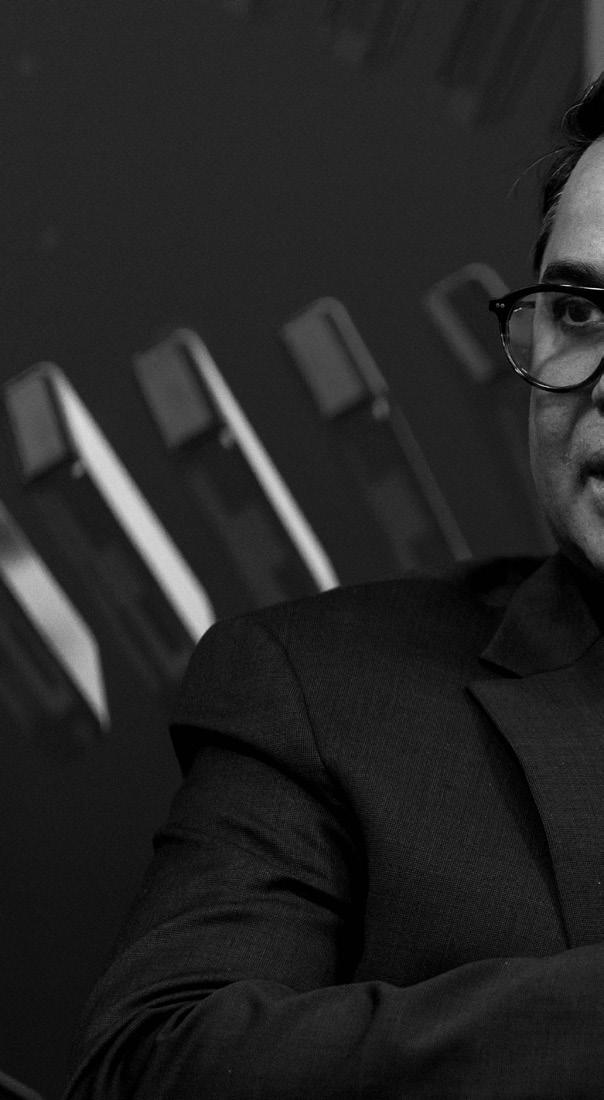
96 March 2023
Top 5 Tips for ESG in Supply Chain Sustainability
1: Start with a comprehensive assessment: The first step in integrating ESG considerations into supply chain sustainability is to understand the current state of the supply chain. This may include evaluating the environmental impact of suppliers, the social impact of production processes, and the governance practices of suppliers.

2: Establish clear ESG goals and objectives: Companies should set clear ESG goals and objectives for their supply chain, such as reducing greenhouse gas emissions, improving worker conditions, or increasing transparency in governance practices.
3: Engage with suppliers: Companies should engage with suppliers to understand their ESG practices and work together to improve sustainability in the supply
chain. This may include providing training and resources to suppliers to help them improve their sustainability practices.
4: Monitor and report on ESG performance: Companies should monitor and report on the ESG performance of their supply chain to ensure that they are making progress towards their sustainability goals. This can be done through regular audits, surveys, and other forms of monitoring.
5: Continuously improve: Companies should continuously strive to improve their ESG practices in the supply chain. This may involve updating sustainability goals, engaging with new suppliers, or implementing new technologies and processes to reduce environmental impact.
By following these tips, companies can integrate ESG considerations into their supply chain sustainability efforts and help create a more sustainable future for all.
“Companies and countries cannot just look at one aspect of ESG and ignore the others”
supplychaindigital.com 97 SUSTAINABILITY
ROHIT BARDAIYAR, EXECUTIVE VP, VDART
0101010101010110101010101010101100101001010100100 10010101010101010101000001010111101010101010101010 1010010101010101001010101010101010100100100101111 10101001010100101001010010100101010101001011010101 01010110101010101010101100101001010100100100101010 10101010101000001010111101010101010101010101001010 10101010010101010101010101001001001011111010100101 01001010010100101001010101010010110101010101011010 10101010101011001010010101001001001010101010101010 10000010101111010101010101010101010010101010101001 01010101010101010010010010111110101001010100101001 01001010010101010100101001010101010110101010101010 1011001010010101001001001010101010101010100000101 01111010101010101010101010010101010101001010101010 10101010010010010111110101001010100101001010010100 101010101001011010101010101101010101010101011001010 01010100100100101010101010101010000010101111010101 01010101010101001010101010100101010101010101010010 01001011111010100101010010100101001010010101010100 10101010101010101101010101010101011001010010101001 00100101010101010101010000010101111010101010101010 10101001010101010100101010101010101010010010010111 11010100101010010100101001010010101010100101001010 10101010110101010101010101100101001010100100100101 01010101010101000001010111101010101010101010101001 01010101010010101010101010101001001001011111010100 1010100101001010010100101010101001010010101010101 01101010101010101011001010010101001001001010101010 10101010000010101111010101010101010101010010101010 10100101010101010101010010010010111110101001010100 10100101001010010101010100101001010101010101101010 10101010101100101001010100100100101010101010101010 00001010111101010101010101010101001010101010100101 01010101010101001001001011111010100101010010100101 00101001010101010010100101010101010110101010101010 1011001010010101001001001010101010101010100000101 011110101010101010101010100101010101010010101010101 01010100100100101111101010010101001010010100101001 01010101001010010101010101011010101010101010110010 10010101001001001010101010101010100000101011110101 01010101010101010010101010101001010101010101010100 10010010111110101001010100101001010010100101010101 00101010101010101011010101010101010110010100101010 01001001010101010101010100000101011110101010101010 10101010010101010101001010101010101010100100100101 01010101010101010010101010101001010101010101010100 10010010111110101001010100101001010010100101010101 00101010101010101011010101010101010110010100101010 01001001010101010101010100000101011110101010101010 10101010010101010101001010101010101010100100100101 11110101001010100101001010010100101010101001010010 10101010101101010101010101011001010010101001001001 01010101010101010000010101111010101010101010101010 01010101010100101010101010101010010010010111110101 0010101001010010100101001010101010010100101010101 01011010101010101010110010100101010010010010101010 10101010100000101011110101010101010101010100101010 10101001010101010101010100100100101111101010010101 00101001010010100101010101001010101010101011010101 98 March 2023 TECHNOLOGY
PROCUREMENT
SUPPLY CHAINS NEED TO
STREAMLINE PROCUREMENT AUTOMATION
Chaplain, Principal Solutions
WRITTEN BY: SEAN ASHCROFT
supplychaindigital.com 99
Jennifer
Engineer at Aera Technologies discusses how AI, Machine Learning and Data enables predictive, self-healing supply chains
Ongoing supply disruption and the prevailing climate of economic and geopolitical uncertainty means there has never been a greater need for procurement to be a strategic business function. This, in turn, is driving the adoption of AI and machine learning (ML) solutions in automating the less strategic aspects of procurement –which, traditionally, have been something of a time-sink for the profession.
Procurement leaders are expected to drive the execution and management of contracts in collaboration with internal stakeholders and suppliers. Their teams, meanwhile, are also expected to contribute to the vendor management lifecycle, including areas such as ESG, risk, and performance requirements.
Today, there's a raft of procurement automation solutions to do the heavy lifting in these and other areas.
Here, we talk to Jennifer Chaplain – Solution Engineering & Customer Engagement Principal for Aera Technology, which helps businesses use real-time data and AI to predict business risk and opportunity – about the hot areas of procurement automation, the benefits of such solutions, and how businesses can get the most from them. In her role, Chaplain implements the company’s core technologies and also designs decision intelligence workflows for global companies. “I am a passionate evangelist for data science and machine learning to enable predictive, self-healing supply chains,” she says. “I guide customers in transformational projects so their systems can react to supply issues autonomously and in real-time, including communication with n-tier suppliers and
“Technologies that digitise and automate decisions can break down silos across the organisation that hide process gaps”
100 March 2023 TECHNOLOGY
JENNIFER CHAPLAIN, SOLUTION ENGINEERING & CUSTOMER ENGAGEMENT PRINCIPAL, AERA TECHNOLOGY
Jennifer Chaplain
TITLE: SOLUTION ENGINEERING & CUSTOMER ENGAGEMENT
PRINCIPAL

COMPANY: AERA TECHNOLOGY
INDUSTRY: TECHNOLOGY AND AI LOCATION: US
In her role, Chaplain implements Aera’s core technologies and also designs decision intelligence workflows for global companies. “I am a passionate evangelist for data science and machine learning to enable predictive, self-healing supply chains,” she says.
“I guide customers in transformational projects so their systems can react to supply issues autonomously and in realtime, including communication with n-tier suppliers and contract manufacturers.”
0101010101010110101010101010101100101001010100100 10010101010101010101000001010111101010101010101010 1010010101010101001010101010101010100100100101111 10101001010100101001010010100101010101001011010101 01010110101010101010101100101001010100100100101010 10101010101000001010111101010101010101010101001010 10101010010101010101010101001001001011111010100101 01001010010100101001010101010010110101010101011010 10101010101011001010010101001001001010101010101010 10000010101111010101010101010101010010101010101001 01010101010101010010010010111110101001010100101001 01001010010101010100101001010101010110101010101010 1011001010010101001001001010101010101010100000101 01111010101010101010101010010101010101001010101010 10101010010010010111110101001010100101001010010100 101010101001011010101010101101010101010101011001010 01010100100100101010101010101010000010101111010101 01010101010101001010101010100101010101010101010010 01001011111010100101010010100101001010010101010100 10101010101010101101010101010101011001010010101001 00100101010101010101010000010101111010101010101010 10101001010101010100101010101010101010010010010111 11010100101010010100101001010010101010100101001010 10101010110101010101010101100101001010100100100101 01010101010101000001010111101010101010101010101001 01010101010010101010101010101001001001011111010100 1010100101001010010100101010101001010010101010101 01101010101010101011001010010101001001001010101010 10101010000010101111010101010101010101010010101010 10100101010101010101010010010010111110101001010100 10100101001010010101010100101001010101010101101010 10101010101100101001010100100100101010101010101010 00001010111101010101010101010101001010101010100101 01010101010101001001001011111010100101010010100101 00101001010101010010100101010101010110101010101010 1011001010010101001001001010101010101010100000101 011110101010101010101010100101010101010010101010101 01010100100100101111101010010101001010010100101001 01010101001010010101010101011010101010101010110010 10010101001001001010101010101010100000101011110101 01010101010101010010101010101001010101010101010100 10010010111110101001010100101001010010100101010101 00101010101010101011010101010101010110010100101010 01001001010101010101010100000101011110101010101010 10101010010101010101001010101010101010100100100101 11110101001010100101001010010100101010101001010010 10101010101101010101010101011001010010101001001001 01010101010101010000010101111010101010101010101010 supplychaindigital.com 101
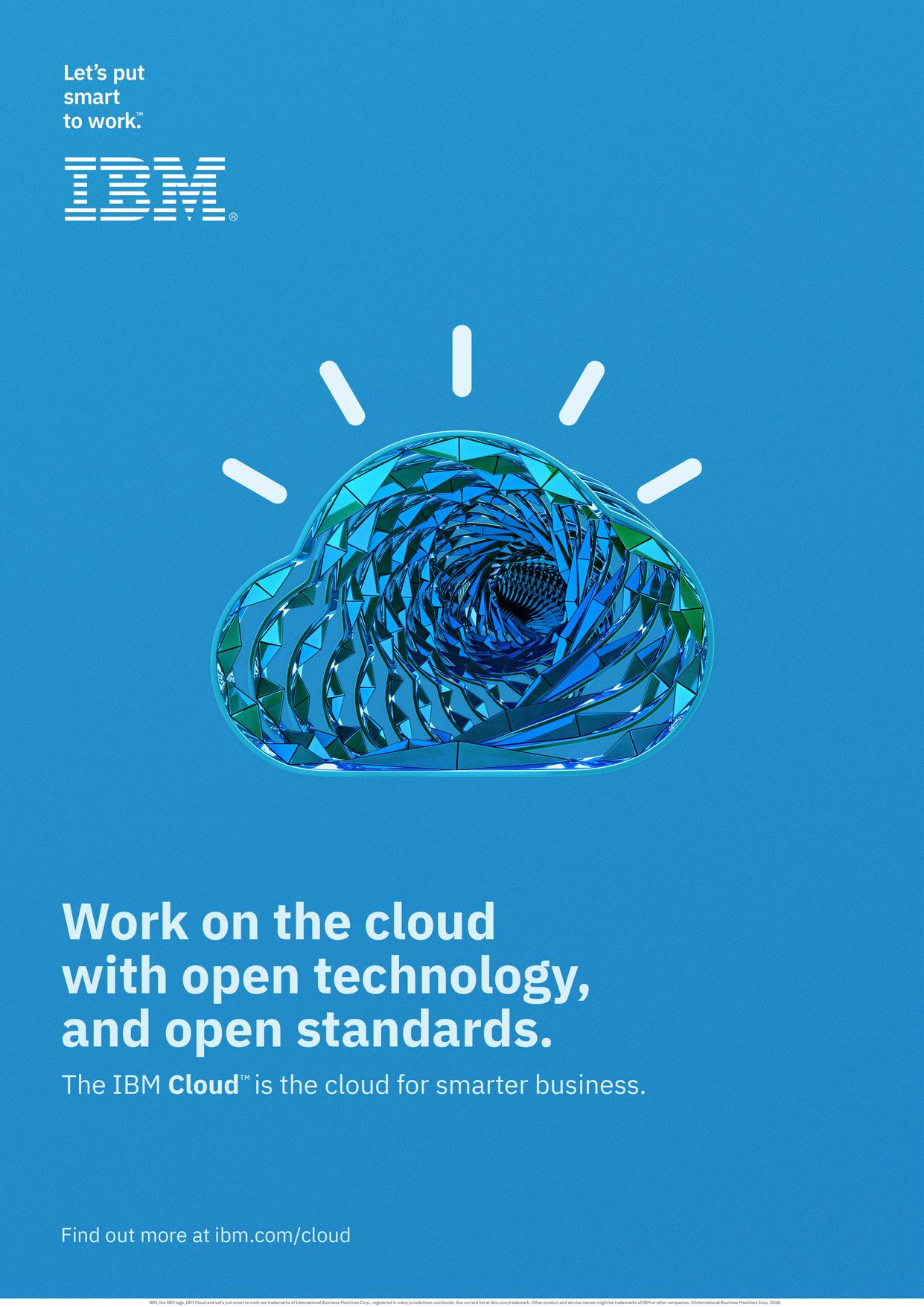
receive a recommended course of action. When a decision is made, the technology then writes back to business systems to change purchase orders and update records. Supplier performance issues are resolved in a fraction of the time. Beyond simply automating tasks, this makes it possible to keep a digital memory of every decision made – capturing valuable institutional knowledge and increasing the team’s ability to automate more decisions in the future.
How
Procurement teams rely on data from customer orders, safety stock, total cost of ownership, suppliers’ on-time in-full performance, and other sources. With so many time-sensitive decisions to be made, technology that makes it easier to harness all of this data is transforming how teams strategise and collaborate.
Technologies that digitise and automate decisions can break down silos across the organisation that hide process gaps. They provide the visibility required for informed actions and better, faster decision making – not just in procurement, but across
Purchase Order Processing
Purchase Requisition
Invoices and Payments
Vendor Management
Contract Management
The Procurement Automation Processes
is digital innovation changing procurement?
“Technology makes it easier to harness data that's transforming how teams strategise and collaborate”
supplychaindigital.com 103 TECHNOLOGY
JENNIFER CHAPLAIN, SOLUTION ENGINEERING & CUSTOMER ENGAGEMENT PRINCIPAL, AERA TECHNOLOGY
Top challenges procurement teams face today
Jennifer Chaplain – Solution Engineering & Customer Engagement Principal for Aera Technology details procurements biggest pain points
1 Procurement teams are often forced to work reactively rather than proactively.
2 They juggle strategy and execution while making daily, even hourly, decisions; responding to supply chain and logistics volatility; managing costs and compliance; and other tasks.
3 Often, such teams have to act without full context for the decisions they make, on top of the fact that the number of decisions that must be made has grown beyond even the best team’s ability to keep up.
5 In many cases, decisions are delayed by complexity amid the slow speed of human collaboration and alignment.
6Information has to be gathered and analysed not just from data lakes, but spreadsheets, emails, or even faxes.
7 Traditional approaches to capturing knowledge and determining the best actions aren’t enough to stay competitive True digital transformation of procurement requires technology that enables faster, more accurate decision making.
4
What’s more, procurement teams frequently rely on siloed technology systems and business processes that don’t provide real-time visibility
11010100101010010100101001010010101010100101001010 10101010110101010101010101100101001010100100100101 01010101010101000001010111101010101010101010101001 01010101010010101010101010101001001001011111010100 1010100101001010010100101010101001010010101010101 01101010101010101011001010010101001001001010101010 10101010000010101111010101010101010101010010101010 10100101010101010101010010010010111110101001010100 10100101001010010101010100101001010101010101101010 10101010101100101001010100100100101010101010101010 00001010111101010101010101010101001010101010100101 01010101010101001001001011111010100101010010100101 00101001010101010010100101010101010110101010101010 1011001010010101001001001010101010101010100000101 011110101010101010101010100101010101010010101010101 01010100100100101111101010010101001010010100101001 01010101001010010101010101011010101010101010110010 10010101001001001010101010101010100000101011110101 01010101010101010010101010101001010101010101010100 10010010111110101001010100101001010010100101010101 00101010101010101011010101010101010110010100101010 01001001010101010101010100000101011110101010101010 10101010010101010101001010101010101010100100100101 11110101001010100101001010010100101010101001010010 10101010101101010101010101011001010010101001001001 01010101010101010000010101111010101010101010101010 01010101010100101010101010101010010010010111110101 0010101001010010100101001010101010010100101010101 01011010101010101010110010100101010010010010101010 10101010100000101011110101010101010101010100101010 10101001010101010101010100100100101111101010010101
the business as a whole. This approach combines data science with digital technologies to understand the business, make recommendations, take action, and learn from decisions and outcomes. With AI and ML constantly analysing data, teams can consider more variables in purchasing and supply chain decisions than before. The system identifies patterns that people might miss, enabling teams to act quickly as market conditions shift. Also, by capturing decisions and their outcomes, procurement teams can (for instance) better understand discrepancies between budgeted and actual spend.
They can balance risk, cost, quality, and other factors whilst making sure that decisions and outcomes align with business objectives.
What benefits is automation bringing procurement?
With improved tools to analyse data, and digitise and automate decisions, procurement teams are identifying new opportunities for cost reduction and savings.
One of the best outcomes is improved communication, collaboration, and accountability, not just within the team but across the enterprise and its ecosystem of
“The ability to automate decision making is a fast-growing trend that’s driving positive outcomes for supply chain functions”
11010100101010010100101001010010101010100101001010 10101010110101010101010101100101001010100100100101 01010101010101000001010111101010101010101010101001 01010101010010101010101010101001001001011111010100 1010100101001010010100101010101001010010101010101 01101010101010101011001010010101001001001010101010 10101010000010101111010101010101010101010010101010 10100101010101010101010010010010111110101001010100 10100101001010010101010100101001010101010101101010 10101010101100101001010100100100101010101010101010 00001010111101010101010101010101001010101010100101 01010101010101001001001011111010100101010010100101 00101001010101010010100101010101010110101010101010 1011001010010101001001001010101010101010100000101 011110101010101010101010100101010101010010101010101 01010100100100101111101010010101001010010100101001 01010101001010010101010101011010101010101010110010 10010101001001001010101010101010100000101011110101 01010101010101010010101010101001010101010101010100 10010010111110101001010100101001010010100101010101 00101010101010101011010101010101010110010100101010 01001001010101010101010100000101011110101010101010 10101010010101010101001010101010101010100100100101 11110101001010100101001010010100101010101001010010 10101010101101010101010101011001010010101001001001 01010101010101010000010101111010101010101010101010 01010101010100101010101010101010010010010111110101 0010101001010010100101001010101010010100101010101 01011010101010101010110010100101010010010010101010 10101010100000101011110101010101010101010100101010 10101001010101010101010100100100101111101010010101 supplychaindigital.com 105 TECHNOLOGY
JENNIFER CHAPLAIN, SOLUTION ENGINEERING & CUSTOMER ENGAGEMENT PRINCIPAL, AERA TECHNOLOGY
customers, suppliers, service providers, and partners.
To give one example, a global consumer packaged goods company is using decision intelligence to identify purchaseprice variance (PPV) in direct materials procurement. This allows the team to identify and correct issues with poor master data, misalignment of pricing data between systems, purchase orders and invoices that aren’t compliant with contracts, and manual pricing changes.
In contrast to relying on spreadsheets to find gaps and then communicating with suppliers for corrections, the company is now automatically identifying issues, accepting auto-generated recommendations for corrections needed, and automatically deferring to a supplier for closure, eliminating the need for manual action.
Not only has the company dynamically streamlined its PPV management and vendor collaboration, but it has also identified practices that weren’t aligned with company-wide procurement processes.
Transformations such as these are possible for procurement teams across a range of industries, and the companies that start this journey now will be better able to innovate for the future.
“I am a passionate evangelist for data science and machine learning to enable predictive, self-healing supply chains”
0101010101010110101010101010101100101001010100100 10010101010101010101000001010111101010101010101010 1010010101010101001010101010101010100100100101111 10101001010100101001010010100101010101001011010101 01010110101010101010101100101001010100100100101010 10101010101000001010111101010101010101010101001010 10101010010101010101010101001001001011111010100101 01001010010100101001010101010010110101010101011010 10101010101011001010010101001001001010101010101010 10000010101111010101010101010101010010101010101001 01010101010101010010010010111110101001010100101001 01001010010101010100101001010101010110101010101010 1011001010010101001001001010101010101010100000101 01111010101010101010101010010101010101001010101010 10101010010010010111110101001010100101001010010100 101010101001011010101010101101010101010101011001010 01010100100100101010101010101010000010101111010101 01010101010101001010101010100101010101010101010010 01001011111010100101010010100101001010010101010100 10101010101010101101010101010101011001010010101001 00100101010101010101010000010101111010101010101010 10101001010101010100101010101010101010010010010111 11010100101010010100101001010010101010100101001010 10101010110101010101010101100101001010100100100101 01010101010101000001010111101010101010101010101001 01010101010010101010101010101001001001011111010100 1010100101001010010100101010101001010010101010101 01101010101010101011001010010101001001001010101010 10101010000010101111010101010101010101010010101010 10100101010101010101010010010010111110101001010100 10100101001010010101010100101001010101010101101010 10101010101100101001010100100100101010101010101010 00001010111101010101010101010101001010101010100101 01010101010101001001001011111010100101010010100101 00101001010101010010100101010101010110101010101010 1011001010010101001001001010101010101010100000101 011110101010101010101010100101010101010010101010101 01010100100100101111101010010101001010010100101001 01010101001010010101010101011010101010101010110010 10010101001001001010101010101010100000101011110101 01010101010101010010101010101001010101010101010100 10010010111110101001010100101001010010100101010101 00101010101010101011010101010101010110010100101010 01001001010101010101010100000101011110101010101010 10101010010101010101001010101010101010100100100101 11110101001010100101001010010100101010101001010010 10101010101101010101010101011001010010101001001001 01010101010101010000010101111010101010101010101010 01010101010100101010101010101010010010010111110101 0010101001010010100101001010101010010100101010101 01011010101010101010110010100101010010010010101010 10101010100000101011110101010101010101010100101010 106 March 2023
JENNIFER CHAPLAIN, SOLUTION ENGINEERING & CUSTOMER ENGAGEMENT PRINCIPAL, AERA TECHNOLOGY
What is Procurement Automation?
Procurement automation refers to the use of technology to automate and streamline various processes involved in procurement, such as sourcing, purchasing, invoice processing, and contract management. The goal of procurement automation is to improve efficiency, reduce costs, minimize errors and increase visibility into the procurement process.
Some of the benefits of procurement automation include:
• IMPROVED EFFICIENCY
Automation of procurement processes can significantly reduce manual effort and streamline workflows, resulting in improved efficiency and faster processing times.
• INCREASED VISIBILITY
Procurement automation can provide real-time data and reporting, allowing organisations to easily track the status of their procurement activities.
• REDUCED COSTS
Automation can help to minimise errors, reduce manual effort, and increase efficiency, resulting in cost savings.
• BETTER SUPPLIER MANAGEMENT
Procurement automation can also support better supplier management, such as by automating the tracking of supplier performance and by providing better data to support supplier negotiations.
There are several types of procurement automation solutions available, including e-sourcing platforms, e-procurement systems, and spend analysis tools. When considering procurement automation, it is important to choose a solution that fits your organization's specific needs and processes.
0101010101010110101010101010101100101001010100100 10010101010101010101000001010111101010101010101010 1010010101010101001010101010101010100100100101111 10101001010100101001010010100101010101001011010101 01010110101010101010101100101001010100100100101010 10101010101000001010111101010101010101010101001010 10101010010101010101010101001001001011111010100101 01001010010100101001010101010010110101010101011010 10101010101011001010010101001001001010101010101010 10000010101111010101010101010101010010101010101001 01010101010101010010010010111110101001010100101001 01001010010101010100101001010101010110101010101010 1011001010010101001001001010101010101010100000101 01111010101010101010101010010101010101001010101010 10101010010010010111110101001010100101001010010100 101010101001011010101010101101010101010101011001010 01010100100100101010101010101010000010101111010101 01010101010101001010101010100101010101010101010010 01001011111010100101010010100101001010010101010100 10101010101010101101010101010101011001010010101001 00100101010101010101010000010101111010101010101010 10101001010101010100101010101010101010010010010111 11010100101010010100101001010010101010100101001010 10101010110101010101010101100101001010100100100101 01010101010101000001010111101010101010101010101001 01010101010010101010101010101001001001011111010100 1010100101001010010100101010101001010010101010101 01101010101010101011001010010101001001001010101010 10101010000010101111010101010101010101010010101010 10100101010101010101010010010010111110101001010100 10100101001010010101010100101001010101010101101010 10101010101100101001010100100100101010101010101010 00001010111101010101010101010101001010101010100101 01010101010101001001001011111010100101010010100101 00101001010101010010100101010101010110101010101010 1011001010010101001001001010101010101010100000101 011110101010101010101010100101010101010010101010101 01010100100100101111101010010101001010010100101001 01010101001010010101010101011010101010101010110010 10010101001001001010101010101010100000101011110101 01010101010101010010101010101001010101010101010100 10010010111110101001010100101001010010100101010101 00101010101010101011010101010101010110010100101010 01001001010101010101010100000101011110101010101010 10101010010101010101001010101010101010100100100101 11110101001010100101001010010100101010101001010010 10101010101101010101010101011001010010101001001001 01010101010101010000010101111010101010101010101010 01010101010100101010101010101010010010010111110101 0010101001010010100101001010101010010100101010101 01011010101010101010110010100101010010010010101010 10101010100000101011110101010101010101010100101010 supplychaindigital.com 107 TECHNOLOGY



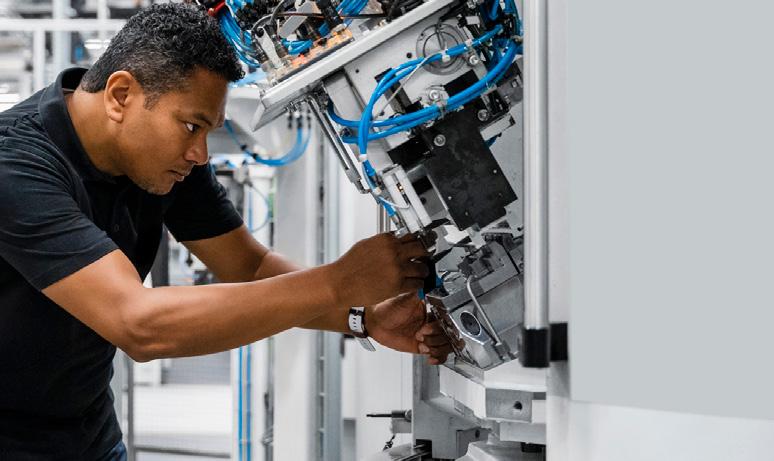
5G 108 March 2023
Supply Chain Digital Magazine looks at the Top 10 supply chain technologies shaping the future of the procurement, supply chain and logistics industry
WRITTEN BY: SEAN ASHCROFT
Pre-pandemic, technology was already beginning to reshape supply chains, but it was a slow and gradual process.
Back then, global production and supply networks were designed to optimise costs and efficiency. However, weaknesses in this supply model were horribly exposed by Covid, the Suez blockage and, subsequently, a seemingly never-ending series of supply chain shocks, not least that caused by Russia's invasion of Ukraine. This has left C-suiters the world
over in little doubt that their supply chains need reimagining. Today's world demands that supply is built on connected networks rather than unwieldy chains than span the globe and are vulnerable to everything from political unrest and extreme weather events, to labour disputes and – in the case of China –continuing Covid disruption.
Technology is key to helping businesses reshape supply chain, and here are 10 of the most important forms of it.
TOP 10
supplychaindigital.com 109
3D PRINTING
3D printing technology allows organizations to create prototypes and products on demand, reducing lead times and costs
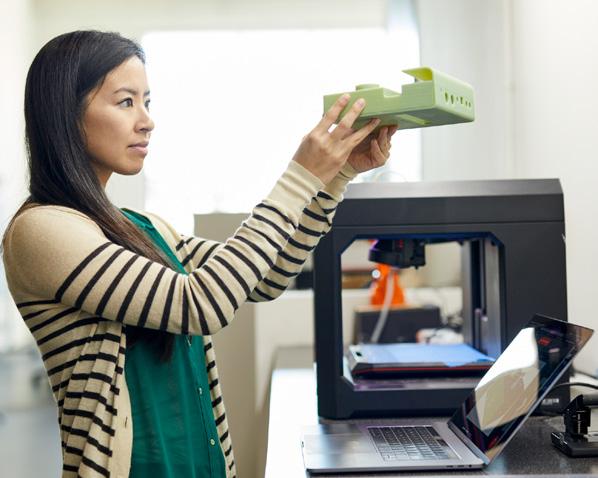
Top companies: GE, Renishaw, Xerox, Stratasys, 3D Systems, Proto Labs, Materialise, Desktop Metal
Additive manufacturing – better known as 3D printing – has come a long way since the early 1980, when it produced only plastic prototypes. Now, it can produce a wide range of finished goods from materials including metal, concrete, plastics, resins and even food.
Businesses looking to shorten supply chains and minimise risk see 3D printing as a way of increasing speed to market and reducing global impact by limiting the shipping of goods around the globe.
5G
5G technology provides faster, more reliable connectivity, enabling organizations to improve communication and collaboration across the supply chain

Top companies: Intel, Nokia, Cisco, Qualcomm, Samsung, Apple, Ericsson
The use of 5G in supply chain operations helps provide visibility. Today, smart sensors can be used to collect and analyse supply chain data in near real time.
First, products with 5G-enabled IoT sensors are placed on a truck, say, at the factory. Because of 5G’s potential to support mobile devices at scale, it’s then possible to track a company’s entire supply chain with greater accuracy. En route, a manager could even check in and see the exact location of the products and the temperature or other environmental causes of a delay that arise in near real time.
TOP 10 10
09 WATCH WATCH 110 March 2023
VR/AR TECHNOLOGY
Virtual and Augmented Reality (VR/AR) technology can help organizations to visualize and simulate supply chain operations, improving decision-making and reducing errors

Top companies: ScienceSoft, ScaleXM, PTC, Lucid Reality Labs, Groove Jones, Spatial
AR can create virtual stockrooms for organisations by projecting holographic products onto shelves. Employees can check specifications like colour and size without accessing a physical product, and make an informed decision when placing an order, so saving organisations store room space and money on unwanted products.
AI, meanwhile, can help with many aspects of supply chain, including procurement, where it helps with process efficiencies. Typically, firms have a system that records employee expenditure, which requires sifting through various files to retrieve data. AI can use big data analytics to do this for you, and recommend certain products, meaning this part of the buying process becomes automated.
AUTONOMOUS VEHICLES
Autonomous vehicles, such as drones and self-driving trucks, can reduce costs and improve delivery times by reducing human error and optimizing routes
Top companies: TuSimple, Embark Trucks, Starsky Robotics, Uber Freight, Volvo Autonomous Solutions, Waymo
Uber Freight recently deployed Volvo’s autonomous transport solution on selected routes, starting in Texas. The solution is also designed to ease strained global supply chains and is a sign of things to come.
Through the integration of vehicle-tovehicle comms and radar-based collision avoidance systems fleets of trucks will soon be commonly driven in ‘platoons’, using aerodynamics to save fuel. Platoons are managed by cloud-based network that connect trucks through mobile comms and Wi-Fi. Cloud-based supervision limits platoons to specified roads in safe driving conditions.

08
07 WATCH
supplychaindigital.com 111
WATCH







Join us at Join us at Procurement & Supply Chain Procurement & Supply Chain Live in London Live in London.
DATA & ANALYTICS
Advanced analytics helps to provide insights into supply chain operations, enabling organizations to identify inefficiencies and make improvements

Top companies: IBM, Accenture, Oracle, SAP, Teradata, Capgemini, Microsoft, Tableau, Kinaxis, Logility, Coupa
Big data is high-volume and/or high-variety information that enables enhanced insight, decision making and process automation. Data analytics is the science of analysing raw data in order to make conclusions about that information. Many of the techniques and processes of data analytics have been automated into mechanical processes and algorithms that work over raw data for human consumption. Until relatively recently, the lack of capabilities around manageable data hindered better informed value-based decision making and proactive risk management efforts.
But Organisations today have a host of new technologies to help with procurement, supply chain risk management, and S&OP.
ROBOTICS PROCESS AUTOMATION
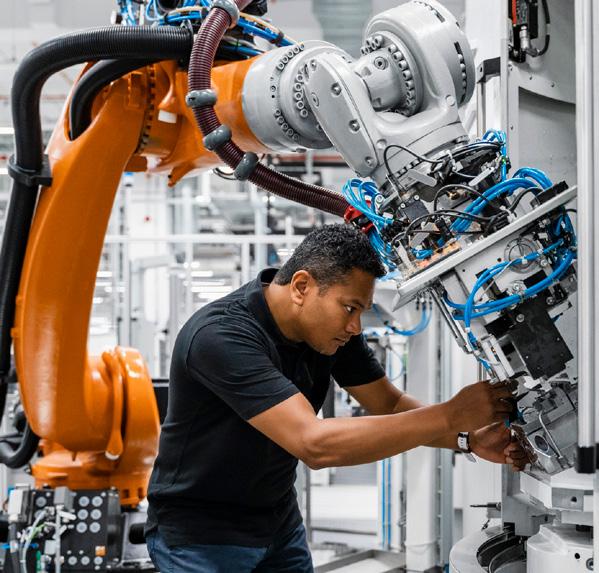
RPA can automate manual and repetitive tasks, freeing up employees to focus on more strategic tasks
Top companies: UiPath, Automation Anywhere, IBM RPA, Blue Prism, Microsoft
Robotics is revolutionising the supply chain and delivering huge value. It improves speed and accuracy of operations, particularly in warehousing and manufacturing. Robots also increase worker productivity, reduce error rate, cut pick-, sort-, and storing-times, and increase access to difficult or dangerous locations. And with the current labour problems robots are shaping up as the lastmile workers of the future.
06
05 WATCH TOP 10 READ supplychaindigital.com 113
IoT
IoT technology helps to track and monitor products in real-time, enabling organizations to make informed decisions about their supply chain
Top companies: iTechArt, Siemens, Vates, Samsara, IBM, PTC, GE Digital, Cisco, Telit
The Internet of Things (IoT) is comprised of billions of sensors that are embedded in various devices, both within the supply chain but also the wider world, like fridges and cars. The IoT allows for data-exchange – both within and between systems – over the Internet, and can leverage actionable data from every step of the supply chain. It’s now used for locating materials, servicing equipment and monitoring productivity and efficiency.
In 2013, there were 20 million smart sensors in use in supply chains, feeding live data back to those controlling supply levers. In 2022, that number hit 1 trillion. By 2030, Deloitte predicts up to 10 trillion sensors will be deployed.
CLOUD COMPUTING
Cloud computing technology allows supply chain organizations to store and process large amounts of data, making it accessible from anywhere at any time

Top companies: AWS, Google Cloud, Microsoft Azure, IBM Cloud, SAP, Oracle, Alibaba, VMWare, Salesforce, ServiceNow
Often people interchange the term 'cloud computing' with SaaS (software-as-aservice). But although closely related, these terms mean different things.
Cloud computing (usually referred to simply as 'the cloud') is a broad term that encompasses various models used to deliver computing services through the Internet as a utility, pay-as-you-go model. SaaS is the best-known model in the cloud, the others being platform-as-a-service (PaaS) and infrastructure-as-a-service (IaaS).
The true power of cloud computing lies in the way it changes the economics of computing.
04
03
READ READ
IOT
BLOCKCHAIN
Blockchain technology provides secure and transparent tracking of goods and products, reducing the risk of fraud and errors
Top companies: Ethereum, IBM Blockchain, Cardano, Ripple, Avalanche, Chainalysis, Hyberledger Fabrik, Hyperledger Sawtooth, R3 Corda, Stellar
Blockchain is significantly changing how retailers and consumer-packaged-goods manufacturers run their supply chains. The need for secure transactions and the demand for ESG and sustainability transparency are driving how buyers relate to brands. Blockchain is meeting these needs by guaranteeing the provenance of goods, as well as the security of supply chain transactions.
Blockchain can significantly improve supply chain, which often lacks traceability and transparency. It provides a decentralised and secure database that records every transaction along the supply chain.
Picture real-time tracking and traceability of products, with regularised updates on each stated leg of a journey.

TOP 10 02
READ supplychaindigital.com 115

0 0 0 0 1 1 A BizClik Brand

OUT NOW Read now 10 0 0 0 1 LEADERS2022 • LE A D SRE 2202 • SREDAEL2202 • EL A D ERS2022 • Creating Digital Communities Don’t miss this Issue! The most influential people in Procurement

118 March 2023
AI AND ML
Artificial Intelligence (AI) and Machine Learning (ML) can help in automating processes, reducing costs, and improving operational efficiencies
Top companies: Uptake, Symbiotic, DataArt, C3.ai, H2O.ai, Coupa, Alloy.ai, Infor, Havi
According to a recent IBM Cognitive Computing Study, 92% of outperforming manufacturing executives say AI and cognitive computing will enhance performance. Advances in artificial intelligence will tie everything together, including supply chain management, enterprise resource planning systems, smart factories, and autonomous warehouses.
Supply chain leaders and their teams are making complex decisions on-the-fly based on data-driven AI and machine learning (ML) solutions. Artificial intelligence is 'umbrella concept.

AI makes basic inferences, and can store data, and learn from it. ML is a subset of AI – an application of it that typically sees unsupervised machines learning from data without human supervisors watching their every move. Warehouses, for example, but also nonstrategic and time-consuming processes, such as invoice processing and standard contract renewals in procurement.
AI touches every field of supply chain management: procurement, manufacturing, fulfilment, logistics, inventory, and ESG compliance.
TOP 10
01 READ supplychaindigital.com 119







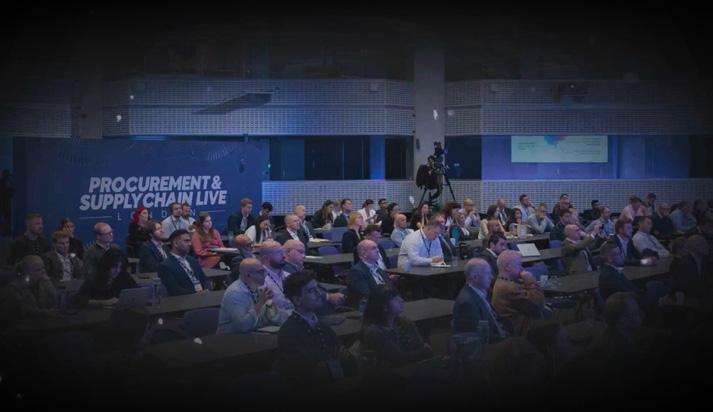
GET YOUR PASS SPONSORSHIP A BizClik Event Join the Virtual Event Disrupting Procurement & Supply Chain 28TH JUNE 2023 VIRTUAL CONFERENCE














































































































































 MAX CABALLERO-VIEYRA, SVP OF DEVICES & SUPPLY CHAIN, T-MOBILE
MAX CABALLERO-VIEYRA, SVP OF DEVICES & SUPPLY CHAIN, T-MOBILE

























































 CLAIRE LISSAMAN (CL)
ROHIT BARDAIYAR (RB)
CLAIRE LISSAMAN (CL)
ROHIT BARDAIYAR (RB)
































